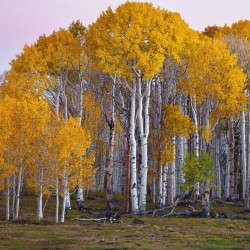Menu
-
Menuالعدمة
- Home
-
التصنيفات
-
-
التصنيفات
-
بذور الخضروات
-
أصناف حسب البلد
- أصناف من أرمينيا
- أصناف من البوسنة والهرسك
- أصناف من كرواتيا
- أصناف من فرنسا
- أصناف من ألمانيا
- أصناف من اليونان
- أصناف من المجر
- أصناف من الهند
- أصناف من إيطاليا
- أصناف من اليابان
- أصناف من شمال مقدونيا
- أصناف من بيرو
- أصناف من روسيا
- أصناف من صربيا
- أصناف من سلوفينيا
- أصناف من اسبانيا
- أصناف من تايلاند
- أصناف من تركيا
- أصناف من الولايات المتحدة الأمريكية
- بذور الطماطم
- بذور الذرة
- عائلة القرع
- الفول الأسرة
- بذور الخيار
- بذور الفلفل
- عائلة الجزرة
- عائلة البصل
- بذور الخس
- عائلة البطاطس
- عائلة الملفوف
- بذور الفجل
- عائلة الشمندر
- بذور البطيخ
- بذور بطيخ
- بذور القرنبيط
- عائلة عباد الشمس
-
أصناف حسب البلد
- بذور الفاكهة
- بذور الفلفل الحار
- بذور عشبة طبية
- تسلق بذور النباتات
- الأشجار - بذور بونساي
- بذور النخيل
- بذور الأعشاب الزينة
- بذور التبغ
-
بذور الخضروات
-
-
-
-
- منتجات جديدة
- التسليم - الدفع
- انشئ حساب
- FAQ
Last Product Reviews
Out of the two seeds, one germinated and the other one was dead and floatin...
By
 Riikka H on 07/03/2024
Riikka H on 07/03/2024
Verified Purchase
يوجد 384 منتجا.
عرض 61-75 من 384 منتجات

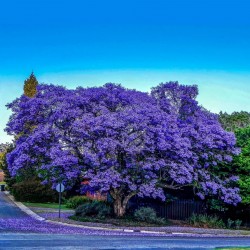
جكراندة ميموزية الأوراق بذور
السعر
2.50 €
(SKU: T 50)
Seeds Gallery EU,
5/
5
<!DOCTYPE html>
<html>
<head>
<meta http-equiv="Content-Type" content="text/html; charset=UTF-8" />
</head>
<body>
<h2><span style="font-size: 14pt;"><strong>(Jacaranda mimosifolia) جكراندة ميموزية الأوراق بذور</strong></span></h2>
<h2><span style="color: #ff0000;"><strong>ثمن عبوة 5 بذور.</strong></span></h2>
<p>جكراندة ميموزية الأوراق هي نوع من النباتات يتبع جنس الجكراندة من الفصيلة البنيونية .</p>
<p>Jacaranda mimosifolia is a sub-tropical tree native to south-central South America that has been widely planted elsewhere because of its beautiful and long-lasting blue flowers. It is also known as jacaranda, blue jacaranda, black poui, or as the fern tree. Older sources give it the systematic name Jacaranda acutifolia, but it is nowadays more usually classified as Jacaranda mimosifolia. In scientific usage, the name "Jacaranda" refers to the genus Jacaranda, which has many other members, but in horticultural and everyday usage, it nearly always means the blue jacaranda.</p>
<p><strong>Habitat</strong></p>
<p>The blue jacaranda has been cultivated in almost every part of the world where there is no risk of frost; established trees can however tolerate brief spells of temperatures down to around −7 °C (19 °F). In the USA, 48 km (30 mi) east of Los Angeles where winter temps can dip to −12 °C (10 °F) for short several-hour periods, the mature tree survives with little or no visible damage.</p>
<p>In the United States, it grows in parts of Oregon, California, Nevada, Arizona, Texas, and Florida, the Mediterranean coast of Spain, in southern Portugal (very noticeably in Lisbon), southern Italy (in Naples and Cagliari it's quite easy to come across beautiful specimens). It was introduced to Cape Town by Baron von Ludwig in about 1829. It is regarded as an invasive species in parts of South Africa and Queensland, Australia, the latter of which has had problems with the Blue Jacaranda preventing growth of native species. Lusaka, the capital of Zambia, and Harare, the capital of Zimbabwe, also see the growth of many Jacarandas.</p>
<p><strong><em><span style="text-decoration: underline;">Appearance</span></em></strong></p>
<p>The tree grows to a height of 5 to 15 m (16 to 49 ft). Its bark is thin and grey-brown in colour, smooth when the tree is young though it eventually becomes finely scaly. The twigs are slender and slightly zigzag; they are a light reddish-brown in colour. The flowers are up to 5 cm (2.0 in) long, and are grouped in 30 cm (12 in) panicles. They appear in spring and early summer, and last for up to two months. They are followed by woody seed pods, about 5 cm (2.0 in) in diameter, which contain numerous flat, winged seeds. The Blue Jacaranda is cultivated even in areas where it rarely blooms, for the sake of its large compound leaves. These are up to 45 cm (18 in) long and bi-pinnately compound, with leaflets little more than 1 cm (0.39 in) long. There is a white form available from nurseries.</p>
<p>Profuse flowering is regarded as magnificent by some and quite messy by others. The unusually shaped, tough pods, which are about 5.1 to 7.6 cm (2 to 3 in) across, are often gathered, cleaned and decorated for use on Christmas trees and in dried arrangements.</p>
<p><strong>Wood</strong></p>
<p>The wood is pale grey to whitish, straight-grained, relatively soft and knot-free. It dries without difficulty and is often used in its green or wet state for turnery and bowl carving.</p>
</body>
</html>
T 50 (5 S)


نبات مقاوم للبرد والصقيع
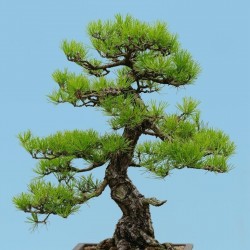
بذور الصنوبر الأحمر...
السعر
1.50 €
(SKU: T 8)
Seeds Gallery EU,
5/
5
<h2 dir="rtl" class=""><strong>بذور الصنوبر الأحمر الياباني (بونساي) (Pinus densiflora)</strong></h2>
<h2 dir="rtl"><span style="color: #ff0000;"><strong>ثمن عبوة من 5 بذور.</strong></span></h2>
الصنوبر الكثيف الأزهار نوع نباتي شجري من ضرب الصنوبر الحقيقي يتبع الفصيلة الصنوبرية. ينتشر في شرق آسيا من كوريا إلى الصين واليابان وجنوب شرق روسيا.<br /><br />Japanese red pine is known in Japan as akamatsu and mematsu, where it is widely cultivated for wood production and as an ornamental tree, playing an important role in classical Japanese gardens.<br /><br />Botanical nomenclature: pinus densiflora<br /><br />Common name: Japanese red pine tree, japanese red pine, akamatsu<br /><br />family: pinaceae<br /><br />Origin: japan, korea and northeast china.<br /><br />Height: between 20 - 35 meters high<br /><br />Brightness: partial shading, full sun<br /><br />Weather: see description below<br /><br />Japanese red pine is known in Japan as akamatsu and mematsu, where it is widely cultivated for wood production and as an ornamental tree, playing an important role in classical Japanese gardens.<br /><br />In winter its leaves are in shades of yellow.<br /><br />The species prefers its cultivation in full sun, in well-drained and slightly acidic soils.<br /><br />Pinus densiflora has enormous potential for regeneration; and maybe because of that, it has resisted degradation and intervention by the weather and by the human being. It occurs from the coast, at sea level, to the lower mountains, and, reaching altitudes of 2,300 meters, it is extremely resistant to frost that may occur in Brazil.<br /><br />Historically, this has been one of the most important species in Japanese architecture. One of the main surviving structural woods from the Muromachi and Edo periods (1603 – 1867).<br /><br />In addition to following in friendly coexistence with the local agriculture, it is also one of, or the main pine used for ornamentation in gardens in Japan, Europe and North America.<br /><br />Species widely explored for bonsai art.
<script src="//cdn.public.n1ed.com/G3OMDFLT/widgets.js"></script>
T 8 (5 S)

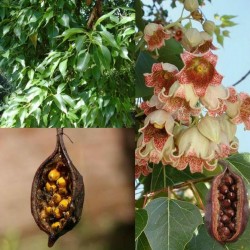
Bottle tree - Kurrajong...
السعر
1.95 €
(SKU: T 44)
Seeds Gallery EU,
5/
5
<div id="idTab1" class="rte">
<h2><span style="font-size:14pt;"><strong>Bottle tree - Kurrajong Seeds - Bonsai (Brachychiton populneus)</strong></span></h2>
<h2><span style="color:#ff0000;font-size:14pt;"><strong>Price for Package of 5 seeds.</strong></span></h2>
<p>The Kurrajong (Brachychiton populneus) is a small to medium sized tree found naturally in Australia in a diversity of habitats from wetter coastal districts to semi-arid interiors of Victoria, New South Wales and Queensland. The extended trunk is a water storage device for survival in a warm dry climate. The bell-shaped flowers are variable in colour (pale to pink) while the leaves vary considerably in shape. The leaves are either simple and pointed, or may be 3 - 9 lobed. Saplings grow from a drought and fire resistant tap-rooted tuber.</p>
<p>Kurrajong has multiple uses. Seeds are eaten by Aboriginal people after roasting. The soft spongy wood was used for making shields, and the bark as a fibre. The leaves are also used as emergency fodder for drought-affected animal stock.</p>
<p>It has been introduced as an ornamental tree to south-western Australia, South Africa, Louisiana, California, Arizona and Mediterranean countries. In Western Australia it was observed to be invasive in disturbed areas.</p>
<p>Horticulturists have hybridised the Kurrajong with related Brachychiton species, including the Queensland bottle tree (B. rupestris) and Illawarra Flame Tree (B. acerifolius) to produce new garden ornamentals.</p>
<p>The specific name populneus pertains to a perceived similarity to genus Populus, the Poplars. Sometimes B. populneus is also known by the names "lacebark kurrajong" and "bottle tree" (USA). However, B.discolor is also referred to as the Lacebark Kurrajong, and Bottle Tree is a term commonly applied not only to other species of Brachychiton but to members of other genera around the world.</p>
<ul><li><em>Brachychiton populneus</em> - <em>Malvaceae</em></li>
<li>Synonyms: <br />Previously listed in the <em>Streculiaceae</em> family. <br />Common Names: Kurrajong, Bottle Tree</li>
<li>Native To: Australia</li>
<li>Habit: Erect or Spreading with a High Canopy. <br />Has Evergreen foliage.</li>
<li>Shape: Conical</li>
<li>Sunset Zones: 12 - 24</li>
<li>USDA Hardiness Zones: 8 - 11</li>
<li>Exposure: Full Sun</li>
<li>Water Needs: Moist to Dry Soil. Drought tolerant.</li>
<li>Soil Type: Loam or Sand</li>
<li>Soil pH: Slightly Acidic to Highly Alkaline</li>
<li>Salinity Tolerance: Moderate on Coast</li>
<li>Seaside Tolerance: Good in Mild Zone</li>
<li>Height: 30 - 50 feet</li>
<li>Canopy Width: 30 feet</li>
<li>Growth Rate: 24 Inches per Season</li>
<li>Landscape Use: Street Tree or Screen</li>
<li>Longevity: 50 to 150 years</li>
<li>Leaves: Lanceolate to Ovate Glossy Medium Green. Evergreen.</li>
<li>Flowers: White. Flowers in Spring or Summer. Has perfect flowers (male and female parts in each flower).</li>
<li>Fruit: Brown Follicle, Large (1.50 - 3.00 inches), fruiting in Summer or Fall.</li>
<li>Bark: Light Gray, Smooth</li>
<li>Pest & Disease: Resistant to Oak Root Fungus. Susceptible to Root Rot</li>
<li>Shading Capacity: Rated as Moderate to Dense in Leaf</li>
<li>Branch Strength: Rated as Medium Weak</li>
<li>Litter Issue: Dry Fruit</li>
<li>Root Damage Potential: Rated as Moderate</li>
<li>Health Hazard: Irritant</li>
</ul></div>
T 44 (5 S)


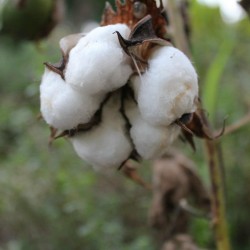
Cotton Seeds (Gossypium...
السعر
2.35 €
(SKU: T 10)
Seeds Gallery EU,
5/
5
<h2><strong>Cotton Seeds (Gossypium Herbaceum)</strong></h2>
<h2><span style="color: #ff0000;"><strong>Price for Package of 10 or 15 seeds.</strong></span></h2>
<p>Gossypium herbaceum is one of the cultivated cotton species. This short-lived and fast-growing perennial shrub can grow up to about 5 ft (1.5 m) tall. It has trilobed or palmate leaves and yellow hibiscus-like flowers. It produces capsules that split open when ripe and that display a loose tuft of white filaments, that constitute the cotton.</p>
<p>This plant likes a long, hot growing season to correctly grow and produce good fibers. Moreover, it is very cold tender and should be grown in frost-free climates. Elsewhere, it can be grown as an annual plant.</p>
<p><strong>WIKIPEDIA:</strong></p>
<p><i><b>Gossypium herbaceum</b></i>, commonly known as <b>Levant cotton</b>, <sup id="cite_ref-BSBI07_1-0" class="reference"></sup>is a species of cotton native to the semi-arid regions of sub-Saharan Africa and Arabia where it still grows in the wild as a perennial shrub.<span style="font-size: 11.6667px;"> </span>It is a sister-species of <i>Gossypium arboreum</i>.</p>
<h2><span class="mw-headline" id="Description">Description</span></h2>
<p><i>G. herbaceum</i><span> </span>has high<span> </span>stems<span> </span>that grow 2 feet (0.61 m) to 6 feet (1.8 m) high with wide, hairy leaves. Their<span> </span>flowers<span> </span>are small and yellow with a purple center. The plant exhibits<span> </span>extrafloral nectaries<span> </span>(calyculal nectaria, found on the receptacle, near the base of the<span> </span>calyculus).</p>
<p>When ripe and in warm weather, the flower capsule will burst and expose the cotton surrounding the<span> </span>seeds<span> </span>firmly. The cotton produced by this plant is short, about 2 inches (5.1 cm) long and is firmly attached to the seed, which is covered in hairy down. An<span> </span>acre<span> </span>of cotton can be expected to produce about 300 pounds (140 kg).</p>
<h2><span class="mw-headline" id="Uses">Uses</span></h2>
<p>Cotton fibers grow from the surface of the seeds and can be separated from these by hand or mechanically; the long fibers are called lint. The cotton fibers are constituted of nearly pure<span> </span>cellulose. The main use of cotton lint is as<span> a </span>textile<span> </span>for clothing. The fibers are spun into<span> </span>yarns<span> </span>and these are woven into<span> </span>fabrics, in the farm or house or in factories. Cotton as a fabric is much appreciated because of its comfortable, breathable properties, its resistance and also because it is easily stained.</p>
<p>The cotton plant itself has medicinal uses and can be cultivated traditionally, in house backyards, for, e.g., women's<span> </span>menstrual cycle<span> </span>pains and irregular bleeding. It is also known to be used after birth to expel the<span> </span>placenta<span> </span>and to increase the<span> </span>lactation, as well as for<span> </span>gastrointestinal issues, such as<span> </span>hemorrhages<span> </span>and<span> </span>diarrhea, for<span> </span>nausea,<span> </span>fevers,<span> </span>and<span> </span>headaches.</p>
<p>In the<span> </span>Levant<span> </span>seeds of<span> </span><i>Gossypium herbaceum</i><span> </span>were also used for food, feed or oil extraction. Cotton seeds, containing up to 20% oil and 20% proteins, are potentially highly rich as food or feed. Nevertheless, small glands present in all the plant organs of the<span> </span><i>Gossypium</i><span> </span>species, except the roots, and especially abundant in the seeds, contain toxic chemicals, in particular, the<span> </span>polyphenolic<span> </span>compound<span> </span>Gossypol. The gossypol is highly toxic to animals and is an element of the plant's direct defense system against herbivorous arthropods. It can cause severe growth and development disorders in humans as well as domestic animals, particularly monogastric animals, while polygastrics are more or less tolerant. For this reason, using oil or whole seeds for human nutrition is dependent upon some way of elimination of the gossypol, through heating or other treatment. The gossypol extracted from cotton seeds has potential use as a<span> </span>male contraceptive<span> </span>but can cause irreversible<span> </span>infertility<span> </span>after repeated use. In<span> </span>lab rat<span> </span>studies, it has been able to<span> </span>stop<span> </span>early<span> </span>pregnancies.</p>
T 10 (10 S)

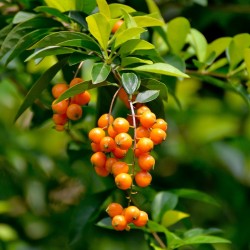
Golden Dewdrop Seeds...
السعر
1.95 €
(SKU: T 33)
Seeds Gallery EU,
5/
5
<h2><strong>Golden Dewdrop Seeds (Duranta erecta)</strong></h2>
<h2><span style="color:#ff0000;"><strong>Price for Package of 5 seeds.</strong></span></h2>
<p><strong>Also known as the Duranta Repens, Golden Dewdrop, or Geisha Girl.</strong></p>
<p>Synonym: Duranta Repens, Duranta Plumieri. A graceful cascading shrub or a pruned and trained small tree, that can grow to 18 feet tall (5.5 meters). Native to Central and South America and the Caribbean. Very showy lavender and white blooms form in tight clusters almost all year long and have light vanilla-like fragrance. Blooming its best in full sun locations. At the same time it produces golden-orange berries in hanging bunches that weigh down the weeping branches. The Foliage is semi-deciduous with lush green shiny leaves that are sometimes toothed. Large established plants will produce thorns.</p>
<p>Attracts a variety of butterflies, bee's, and hummingbirds. Grows best in moist, but well-drained and moderately fertile soil in a container or the ground. </p>
<div>USDA ZONE 8A-11</div>
<p>*The leaves and berries are very toxic. Children and pets should be kept away*</p>
T 33 (5 S)

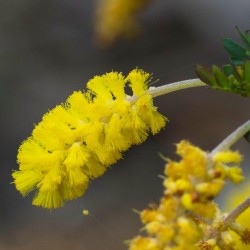
Dwarf Wattle Seeds
السعر
1.85 €
(SKU: T 4)
Seeds Gallery EU,
5/
5
<div>
<h2><span style="font-size:14pt;"><strong>Dwarf Wattle Seeds (Acacia drummondii drummondii)</strong></span><br /><span style="color:#ff0000;font-size:14pt;"><strong>Price for Package of 3 seeds.</strong></span></h2>
<div>Acacia Drummondii drummondii is a beautiful little shrub to some 80 cm that has masses of bright yellow flowers in the Spring. The foliage is a grey-green and the blooms are a spray up to several inches long. As with many acacia it is attractive to pollenating birds and makes an attractive cut flower and has an attractive fragrance. It makes an attractive patio or small garden plant. Best in areas with low humidity.</div>
<div>Scientific Name: ACACIA drummondii ssp candolleana </div>
<div>Common Name: Dwarf Wattle</div>
<div>Family: Mimosaceae</div>
<div>Height: Up to 1 m(3')</div>
<div>Description: A beautiful small shrub.</div>
<div>Flowers: Masses of bright yellow elongated flowers amongst small elegant grey-green leaves. A superb plant to light up a garden in the Winter through to Spring. Excellent cut flowers.</div>
<div>Soil: Will adapt to almost any soil type. Ensure good drainage.</div>
<div>Aspects: Prefers part shade to full sun </div>
<div>Growing: Easy to grow from seed. Soak seeds overnight in a cup of hot (not boiling) water with Wildflower Seed Starter Granules added. Drain water, select swollen seeds for sowing, soak any unswollen seeds again. Fill a pot with moist sandy soil, wet thoroughly and compress. Sow seeds thinly on top of soil, cover with a thin layer of soil. It is beneficial to add a light amount of Wildflower Seed Starter granules to soil surface.</div>
<div>Landscape: Suitable for open garden, rockeries, large pots or tubs.</div>
<div>Cultivation: Keep soil moist. Place pot in a warm, shady position. Cover pot with clear polythene until germination commences. Germination takes 14-35 days.Once seedlings appear they can be thinned out.Transplant when 5cm (2") high, disturbing roots as little as possible. Water in well and water regularly until established, then occasionally in dry weather. Protect against snails.</div>
<div>Seed Starter Required: Recommended</div>
</div>
<table cellspacing="0" cellpadding="0" border="1"><tbody><tr><td colspan="2" width="100%" valign="top">
<p><span style="color:#008000;"><strong>Sowing Instructions</strong></span></p>
</td>
</tr><tr><td valign="top" nowrap="nowrap">
<p><span style="color:#008000;"><strong>Propagation:</strong></span></p>
</td>
<td valign="top">
<p><span style="color:#008000;">Seeds</span></p>
</td>
</tr><tr><td valign="top" nowrap="nowrap">
<p><span style="color:#008000;"><strong>Pretreat:</strong></span></p>
</td>
<td valign="top">
<p><span style="color:#008000;">scarify/roughen + soak ca. 24-48 h in warm water</span></p>
</td>
</tr><tr><td valign="top" nowrap="nowrap">
<p><span style="color:#008000;"><strong>Stratification:</strong></span></p>
</td>
<td valign="top">
<p><span style="color:#008000;">0</span></p>
</td>
</tr><tr><td valign="top" nowrap="nowrap">
<p><span style="color:#008000;"><strong>Sowing Time:</strong></span></p>
</td>
<td valign="top">
<p><span style="color:#008000;">all year round</span></p>
</td>
</tr><tr><td valign="top" nowrap="nowrap">
<p><span style="color:#008000;"><strong>Sowing Depth:</strong></span></p>
</td>
<td valign="top">
<p><span style="color:#008000;">0,5-1 cm</span></p>
</td>
</tr><tr><td valign="top" nowrap="nowrap">
<p><span style="color:#008000;"><strong>Sowing Mix:</strong></span></p>
</td>
<td valign="top">
<p><span style="color:#008000;">Coir or sowing mix + sand or perlite</span></p>
</td>
</tr><tr><td valign="top" nowrap="nowrap">
<p><span style="color:#008000;"><strong>Germination temperature:</strong></span></p>
</td>
<td valign="top">
<p><span style="color:#008000;">25-28°C</span></p>
</td>
</tr><tr><td valign="top" nowrap="nowrap">
<p><span style="color:#008000;"><strong>Location:</strong></span></p>
</td>
<td valign="top">
<p><span style="color:#008000;">bright + keep constantly moist not wet</span></p>
</td>
</tr><tr><td valign="top" nowrap="nowrap">
<p><span style="color:#008000;"><strong>Germination Time:</strong></span></p>
</td>
<td valign="top">
<p><span style="color:#008000;">3-6 weeks</span></p>
</td>
</tr><tr><td valign="top" nowrap="nowrap">
<p><span style="color:#008000;"><strong>Watering:</strong></span></p>
</td>
<td valign="top">
<p><span style="color:#008000;">Water regularly during the growing season</span></p>
</td>
</tr><tr><td valign="top" nowrap="nowrap">
<p><span style="color:#008000;"><strong> </strong></span></p>
</td>
<td valign="top">
<p><br /><span style="color:#008000;"><em>Copyright © 2012 Seeds Gallery - Saatgut Galerie - Galerija semena. </em><em>All Rights Reserved.</em></span></p>
</td>
</tr></tbody></table>
T 4

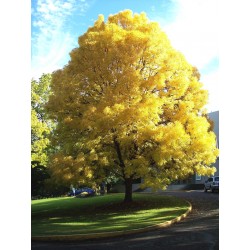
European ash Seeds
السعر
1.50 €
(SKU: T 22)
Seeds Gallery EU,
5/
5
<!DOCTYPE html>
<html>
<head>
<meta http-equiv="Content-Type" content="text/html; charset=UTF-8" />
</head>
<body>
<h2><span style="font-size: 14pt;"><strong>European ash Seeds (Fraxinus excelsior)</strong></span></h2>
<h2><span style="color: #ff0000;"><strong><span style="font-size: 14pt;">Price for Package of 20 seeds.</span></strong></span></h2>
<div>Fraxinus excelsior — known as the ash, or European ash or common ash to distinguish it from other types of ash — is a species of Fraxinus native to most of Europe with the exception of northern Scandinavia and southern Iberia, and also southwestern Asia from northern Turkey east to the Caucasus and Alborz mountains. The northernmost location is in the Trondheimsfjord region of Norway. it is a large deciduous tree growing to 20–35 m (exceptionally to 46 m) tall with a trunk up to 2 m (exceptionally to 3.5 m) diameter, with a tall, domed crown. The bark is smooth and pale grey on young trees, becoming thick and vertically fissured on old trees. The shoots are stout, greenish-grey, with jet black buds (which distinguish it from most other ash species, which have grey or brown buds). The leaves are 20–35 cm long, pinnate compound, with 7-13 leaflets, the leaflets 3–12 cm long and 0.8–3 cm broad, sessile on the leaf rachis, and with a serrated margin. The leaves are often among the last to open in spring, and the first to fall in autumn if an early frost strikes; they have no marked autumn colour, often falling dull green. The flowers open before the leaves, the female flowers being somewhat longer than the male flowers; they are dark purple, and without petals, and are wind-pollinated. Both male and female flowers can occur on the same tree, but it is more common to find all male and all female trees; a tree that is all male one year can produce female flowers the next, and similarly a female tree can become male. The fruit is a samara 2.5-4.5 cm long and 5–8 mm broad, often hanging in bunches through the winter; they are often called 'ash keys'.[1][3][4] If the fruit is gathered and planted when it is still green and not fully ripe, it will germinate straightaway, however once the fruit is brown and fully ripe, it will not germinate until 18 months after sowing (i.e. not until two winters have passed).</div>
<div>European Ash rarely exceeds 250 years of age. However there are numerous ones estimated between 200 and 250 years old and there are a couple over 250. The largest is in Clapton Court, England and is 9 m (29 ft) in girth. There are several examples over 4.5 metres (15 feet) in Derbyshire alone.</div>
<div>Ecology</div>
<div>Ash occurs on a wide range of soil types, but is particularly associated with basic soils on calcareous substrates. The most northerly ashwood in Britain is on limestone at Rassal, Wester Ross, latitude 57.4278 N.</div>
<div>A number of Lepidoptera use the species as a food source. See Lepidoptera which feed on ashes.</div>
<div>Ash dieback</div>
<div>Ash dieback caused by the fungus Chalara fraxinea[6] has affected large numbers of trees since the mid-1990s, particularly in eastern and northern Europe (though the disease has been observed across much of its range).[7][8]</div>
<div>Uses</div>
<div>Replica of the body frame from the Volvo ÖV 4 car, made primarily from ash wood</div>
<div>The resilience and rapid growth made it an important resource for smallholders and farmers. It was probably the most versatile wood in the countryside with wide-ranging uses. Until World War II the trees were often coppiced on a ten year cycle to provide a sustainable source of timber for fuel and poles for building and woodworking.[9]</div>
<div>Wood</div>
<div>The colour of the wood ranges from creamy white through light brown, and the heart wood may be a darker olive-brown. Ash timber is hard, tough and very hard-wearing, with a coarse open grain and a density of 710 kg per cubic meter.[10] It lacks oak's natural resistance to decay, and is not as suitable for posts buried in the ground. Because of its high flexibility, shock-resistance and resistance to splitting. Ash wood is the traditional material for bows, tool handles, especially for hammers and axes, tennis rackets and snooker cue sticks[citation needed]and it was extensively used in the construction of early aircraft. Ash is valuable as firewood because it burns well even when 'green' (freshly cut).[11] Ash was coppiced, often in hedgerows, and evidence in the form of some huge boles with multiple trunks emerging at head height can still be seen in parts of Britain. In Northumberland, crab and lobster pots (traps) sometimes known as 'creeves' by local people are still made from ash sticks.[citation needed] Because of its elasticity European Ash wood was commonly used for walking sticks. Poles were cut from a coppice and the ends heated in steam. The wood could then be bent in a curved vise to form the handle of the walking stick. The light colour and attractive grain of ash wood make it popular in modern furniture such as chairs, dining tables, doors and other architectural features and wood flooring, although the wood is often popularly stained jet black.[citation needed]</div>
<p>Ash is the only wood used for the manufacture of hurleys, referred to as hurls in parts of Leinster and known as a camán in Irish, the timber sticks used in the game of hurling in Ireland. Hurleys are manufactured from the butt log (bottom 1.5 metre of the stem) and from trees ideally of a diameter at breast height of approximately 25-30 centimetres. Only fast grown, straight and branch free ash can be used for this purpose. Due to the lack of available ash in Ireland, over 75% of the timber needed to produce the 350,000 hurleys required for the game annually must be imported, mostly from eastern European countries.[12] The importance of ash timber to the game of hurling is reflected in the fact that the game is referred to all over Ireland as "The Clash Of The Ash".</p>
<table cellspacing="0" cellpadding="0" border="1">
<tbody>
<tr>
<td colspan="2" width="100%" valign="bottom">
<p align="center"><span style="color: #008000;"><strong>Sowing Instructions</strong></span></p>
</td>
</tr>
<tr>
<td width="35%" valign="bottom" nowrap="nowrap">
<p align="center"><span style="color: #008000;"><strong>Propagation:</strong></span></p>
</td>
<td width="64%" valign="bottom">
<p align="center"><span style="color: #008000;">Seeds </span></p>
</td>
</tr>
<tr>
<td width="35%" valign="bottom" nowrap="nowrap">
<p align="center"><span style="color: #008000;"><strong>Pretreat:</strong></span></p>
</td>
<td width="64%" valign="bottom">
<p align="center"><span style="color: #008000;">0</span></p>
</td>
</tr>
<tr>
<td width="35%" valign="bottom" nowrap="nowrap">
<p align="center"><span style="color: #008000;"><strong>Stratification:</strong></span></p>
</td>
<td width="64%" valign="bottom">
<p align="center"><span style="color: #008000;">0</span></p>
</td>
</tr>
<tr>
<td width="35%" valign="bottom" nowrap="nowrap">
<p align="center"><span style="color: #008000;"><strong>Sowing Time:</strong></span></p>
</td>
<td width="64%" valign="bottom">
<p align="center"><span style="color: #008000;">all year round</span></p>
</td>
</tr>
<tr>
<td width="35%" valign="bottom" nowrap="nowrap">
<p align="center"><span style="color: #008000;"><strong>Sowing Depth:</strong></span></p>
</td>
<td width="64%" valign="bottom">
<p align="center"><span style="color: #008000;">0.5 - 1 cm</span></p>
</td>
</tr>
<tr>
<td width="35%" valign="bottom" nowrap="nowrap">
<p align="center"><span style="color: #008000;"><strong>Sowing Mix:</strong></span></p>
</td>
<td width="64%" valign="bottom">
<p align="center"><span style="color: #008000;">Coir or sowing mix + sand or perlite</span></p>
</td>
</tr>
<tr>
<td width="35%" valign="bottom" nowrap="nowrap">
<p align="center"><span style="color: #008000;"><strong>Germination temperature:</strong></span></p>
</td>
<td width="64%" valign="bottom">
<p align="center"><span style="color: #008000;">about 20-25 ° C.</span></p>
</td>
</tr>
<tr>
<td width="35%" valign="bottom" nowrap="nowrap">
<p align="center"><span style="color: #008000;"><strong>Location:</strong></span></p>
</td>
<td width="64%" valign="bottom">
<p align="center"><span style="color: #008000;">bright + keep constantly moist not wet</span></p>
</td>
</tr>
<tr>
<td width="35%" valign="bottom" nowrap="nowrap">
<p align="center"><span style="color: #008000;"><strong>Germination Time:</strong></span></p>
</td>
<td width="64%" valign="bottom">
<p align="center"><span style="color: #008000;">3-5 weeks</span></p>
</td>
</tr>
<tr>
<td width="35%" valign="bottom" nowrap="nowrap">
<p align="center"><span style="color: #008000;"><strong>Watering:</strong></span></p>
</td>
<td width="64%" valign="bottom">
<p align="center"><span style="color: #008000;">Water regularly during the growing season</span></p>
</td>
</tr>
<tr>
<td width="35%" valign="bottom" nowrap="nowrap">
<p align="center"><span style="color: #008000;"><strong> </strong></span></p>
</td>
<td width="64%" valign="bottom">
<p align="center"><br /><span style="color: #008000;">Copyright © 2012 Seeds Gallery - Saatgut Galerie - Galerija semena. All Rights Reserved.</span></p>
</td>
</tr>
</tbody>
</table>
</body>
</html>
T 22


نبات عملاق (به ثمار عملاقة)

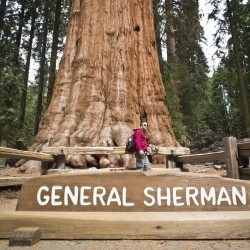
Giant Sequoia Seeds Bonsai
السعر
2.35 €
(SKU: T 16)
Seeds Gallery EU,
5/
5
<div id="more_info_sheets" class="sheets align_justify">
<div id="idTab1" class="rte">
<h2><span style="font-size: 14pt;"><strong>Giant Sequoia Seeds Bonsai (Sequoiadendron giganteum)</strong></span></h2>
<h2><span style="color: #ff0000; font-size: 14pt;"><strong>Price for Package of 5 seeds.</strong></span></h2>
<p><i style="font-size: 14px;"><b>Sequoiadendron giganteum</b></i><span style="font-size: 14px;"> </span><span style="font-size: 14px;">(</span><b style="font-size: 14px;">giant sequoia</b><span style="font-size: 14px;">; also known as</span><span style="font-size: 14px;"> </span><b style="font-size: 14px;">giant redwood</b><span style="font-size: 14px;">,</span><span style="font-size: 14px;"> </span><b style="font-size: 14px;">Sierra redwood</b><span style="font-size: 14px;">,</span><span style="font-size: 14px;"> </span><b style="font-size: 14px;">Sierran redwood</b><span style="font-size: 14px;">,</span><span style="font-size: 14px;"> </span><b style="font-size: 14px;">Wellingtonia</b><span style="font-size: 14px;"> </span><span style="font-size: 14px;">or simply</span><span style="font-size: 14px;"> </span><b style="font-size: 14px;">big tree</b><span style="font-size: 14px;">—a nickname also used by</span><span style="font-size: 14px;"> </span>John Muir<sup id="cite_ref-2" class="reference">[2]</sup><span style="font-size: 14px;">) is the sole living species in the genus</span><span style="font-size: 14px;"> </span><i style="font-size: 14px;">Sequoiadendron</i><span style="font-size: 14px;">, and one of three species of</span><span style="font-size: 14px;"> </span>coniferous<span style="font-size: 14px;"> </span>trees<span style="font-size: 14px;"> </span><span style="font-size: 14px;">known as</span><span style="font-size: 14px;"> </span>redwoods<span style="font-size: 14px;">, classified in the family</span><span style="font-size: 14px;"> </span>Cupressaceae<span style="font-size: 14px;"> </span><span style="font-size: 14px;">in the subfamily</span><span style="font-size: 14px;"> </span>Sequoioideae<span style="font-size: 14px;">, together with</span><span style="font-size: 14px;"> </span><i style="font-size: 14px;">Sequoia sempervirens</i><span style="font-size: 14px;"> </span><span style="font-size: 14px;">(coast redwood) and</span><span style="font-size: 14px;"> </span><i style="font-size: 14px;">Metasequoia glyptostroboides</i><span style="font-size: 14px;"> </span><span style="font-size: 14px;">(dawn redwood). Giant sequoia specimens are the most massive trees on Earth.</span><sup id="cite_ref-usda_3-0" class="reference">[3]</sup><span style="font-size: 14px;"> </span><span style="font-size: 14px;">The common use of the name</span><span style="font-size: 14px;"> </span><i style="font-size: 14px;">sequoia</i><span style="font-size: 14px;"> </span><span style="font-size: 14px;">usually refers to</span><span style="font-size: 14px;"> </span><i style="font-size: 14px;">Sequoiadendron giganteum</i><span style="font-size: 14px;">, which occurs naturally only in groves on the western slopes of the</span><span style="font-size: 14px;"> </span>Sierra Nevada<span style="font-size: 14px;"> </span><span style="font-size: 14px;">Mountains of California.</span></p>
<div>
<p>The etymology of the genus name has been presumed—initially in<span> </span><i>The Yosemite Book</i><span> </span>by<span> </span>Josiah Whitney<span> </span>in 1868<sup id="cite_ref-cnps1_4-0" class="reference">[4]</sup>—to be in honor of<span> </span>Sequoyah<span> </span>(1767–1843), who was the inventor of the<span> </span>Cherokee syllabary.<sup id="cite_ref-natcomp_5-0" class="reference">[5]</sup><span> </span>An etymological study published in 2012, however, concluded that the name was more likely to have originated from the Latin<span> </span><i>sequi</i><span> </span>(meaning<span> </span><i>to follow</i>) since the number of seeds per cone in the newly-classified genus fell in mathematical sequence with the other four genera in the suborder.<sup id="cite_ref-cnps2_6-0" class="reference">[6]</sup></p>
<h2><span class="mw-headline" id="Description">Description</span></h2>
<div class="thumb tleft">
<div class="thumbinner"><img alt="" src="https://upload.wikimedia.org/wikipedia/commons/thumb/2/20/Daniel_Fuchs.CC-BY-SA.Sequoiadendron_giganteum.jpg/220px-Daniel_Fuchs.CC-BY-SA.Sequoiadendron_giganteum.jpg" width="220" height="150" class="thumbimage">
<div class="thumbcaption">
<div class="magnify"></div>
Leaves of<span> </span><i>Sequoiadendron giganteum</i></div>
</div>
</div>
<p>Giant sequoia specimens are the most massive individual trees in the world.<sup id="cite_ref-usda_3-1" class="reference">[3]</sup><span> </span>They grow to an average height of 50–85 m (164–279 ft) with trunk diameters ranging from 6–8 m (20–26 ft). Record trees have been measured at 94.8 m (311 ft) tall. Trunk diameters of 17 m (56 ft) have been claimed via research figures taken out of context.<sup id="cite_ref-Flint_2002_7-0" class="reference">[7]</sup><span> </span>The specimen known to have the greatest<span> </span>diameter at breast heightis the<span> </span>General Grant tree<span> </span>at 8.8 m (28.9 ft).<sup id="cite_ref-8" class="reference">[8]</sup><span> </span>Between 2014 and 2016, specimens of<span> </span>coast redwood<span> </span>were found to have greater trunk diameters than all known giant sequoias.<sup id="cite_ref-mdvaden.com_9-0" class="reference">[9]</sup><span> </span>The trunks of coast redwoods taper at lower heights than those of giant sequoias which have more columnar trunks that maintain larger diameters to greater heights.</p>
<p>The oldest known giant sequoia is 3,500 years old based on<span> </span>dendrochronology. Giant sequoias are among<span> </span>the oldest living organisms<span> </span>on Earth. Giant sequoia bark is fibrous, furrowed, and may be 90 cm (3 ft) thick at the base of the columnar trunk. The bark provides significant protection from fire damage. The leaves are<span> </span>evergreen, awl-shaped, 3–6 mm (<span class="frac nowrap"><sup>1</sup>⁄<sub>8</sub></span>–<span class="frac nowrap"><sup>1</sup>⁄<sub>4</sub></span> in) long, and arranged spirally on the shoots.</p>
<div class="thumb tleft">
<div class="thumbinner"><img alt="" src="https://upload.wikimedia.org/wikipedia/commons/thumb/e/e4/Sequoiadendron_giganteum_MHNT.BOT.2004.0.191.jpg/220px-Sequoiadendron_giganteum_MHNT.BOT.2004.0.191.jpg" width="220" height="199" class="thumbimage">
<div class="thumbcaption">
<div class="magnify"></div>
Giant sequoia cones and seed</div>
</div>
</div>
<p>The giant sequoia regenerates by<span> </span>seed. The seed<span> </span>cones<span> </span>are 4–7 cm (<span class="frac nowrap">1<span class="visualhide"> </span><sup>1</sup>⁄<sub>2</sub></span>–3 in) long and mature in 18–20 months, though they typically remain green and closed for as long as 20 years. Each cone has 30–50 spirally arranged scales, with several seeds on each scale, giving an average of 230 seeds per cone. Seeds are dark brown, 4–5 mm (0.16–0.20 in) long, and 1 mm (0.04 in) broad, with a 1-millimeter (0.04 in) wide, yellow-brown wing along each side. Some seeds shed when the cone scales shrink during hot weather in late summer, but most are liberated by insect damage or when the cone dries from the heat of fire. Young trees start to bear cones after 12 years.</p>
<p>Trees may produce sprouts from their stumps subsequent to injury, until about 20 years old; however, shoots do not form on the stumps of mature trees as they do on coast redwoods. Giant sequoias of all ages may sprout from their<span> </span>boles<span> </span>when branches are lost to fire or breakage.</p>
<p>A large tree may have as many as 11,000 cones. Cone production is greatest in the upper portion of the canopy. A mature giant sequoia disperses an estimated 300–400 thousand seeds annually. The winged seeds may fly as far as 180 m (590 ft) from the parent tree.</p>
<p>Lower branches die readily from being shaded, but trees younger than 100 years retain most of their dead branches. Trunks of mature trees in groves are generally free of branches to a height of 20–50 m (70–160 ft), but solitary trees retain lower branches.</p>
<h2><span class="mw-headline" id="Biology">Biology</span></h2>
<p>Because of its size, the tree has been studied for its water pull. Water from the roots can be pushed up only a few meters by<span> </span>osmotic pressure<span> </span>but can reach extreme heights by using a system of branching<span> </span>capillarity(capillary action) in the tree's<span> </span>xylem<span> </span>(the water tubules) and sub-pressure from evaporating water at the leaves.<sup id="cite_ref-10" class="reference">[10]</sup><span> </span>Sequoias supplement water from the soil with fog, taken up through<span> </span>air roots, at heights to where the root water cannot be pulled.</p>
<h2><span class="mw-headline" id="Distribution">Distribution</span></h2>
<div class="thumb tright">
<div class="thumbinner"><img alt="" src="https://upload.wikimedia.org/wikipedia/commons/thumb/6/69/A014%2C_Sequoia_National_Park%2C_California%2C_USA%2C_1998.jpg/220px-A014%2C_Sequoia_National_Park%2C_California%2C_USA%2C_1998.jpg" width="220" height="147" class="thumbimage">
<div class="thumbcaption">
<div class="magnify"></div>
The<span> </span>Generals Highway<span> </span>passes between giant sequoias in Sequoia National Park</div>
</div>
</div>
<p>The natural distribution of giant sequoias is restricted to a limited area of the western<span> </span>Sierra Nevada,<span> </span>California. They occur in scattered groves, with a total of 68 groves (see<span> </span>list of sequoia groves<span> </span>for a full inventory), comprising a total area of only 144.16 km<sup>2</sup><span> </span>(35,620 acres). Nowhere does it grow in pure stands, although in a few small areas, stands do approach a pure condition. The northern two-thirds of its range, from the<span> </span>American River<span> </span>in<span> </span>Placer County<span> </span>southward to the<span> </span>Kings River, has only eight disjunct groves. The remaining southern groves are concentrated between the Kings River and the Deer Creek Grove in southern<span> </span>Tulare County. Groves range in size from 12.4 km<sup>2</sup><span> </span>(3,100 acres) with 20,000 mature trees, to small groves with only six living trees. Many are protected in<span> </span>Sequoia<span> </span>and<span> </span>Kings Canyon National Parks<span> </span>and<span> </span>Giant Sequoia National Monument.</p>
<p>The giant sequoia is usually found in a humid climate characterized by dry summers and<span> </span>snowy<span> </span>winters. Most giant sequoia groves are on granitic-based residual and<span> </span>alluvial<span> </span>soils. The elevation of the giant sequoia groves generally ranges from 1,400–2,000 m (4,600–6,600 ft) in the north, to 1,700–2,150 metres (5,580–7,050 ft) to the south. Giant sequoias generally occur on the south-facing sides of northern mountains, and on the northern faces of more southerly slopes.</p>
<p>High levels of reproduction are not necessary to maintain the present population levels. Few groves, however, have sufficient young trees to maintain the present density of mature giant sequoias for the future. The majority of giant sequoias are currently undergoing a gradual decline in density since European settlement.</p>
<p>While the present day distribution of this species is limited to a small area of California, it was once much more widely distributed in prehistoric times, and was a reasonably common species in North American and Eurasian coniferous forests until its range was greatly reduced by the last<span> </span>ice age. Older fossil specimens reliably identified as giant sequoia have been found in<span> </span>Cretaceous<span> </span>era sediments from a number of sites in North America and Europe, and even as far afield as New Zealand<span> </span>and Australia.</p>
<p>A group of sequoias was planted and is naturally propagating on<span> </span>Mount San Jacinto<span> </span>in<span> </span>Riverside County, southern California. The trees were planted by the<span> </span>United States Forest Service<span> </span>after a 1974 wildfire.<sup id="cite_ref-14" class="reference">[14]</sup></p>
<h2><span class="mw-headline" id="Ecology">Ecology</span></h2>
<div class="thumb tright">
<div class="thumbinner"><img alt="" src="https://upload.wikimedia.org/wikipedia/en/thumb/7/7b/Sequoia_trees.JPG/220px-Sequoia_trees.JPG" width="220" height="165" class="thumbimage">
<div class="thumbcaption">
<div class="magnify"></div>
Two giant sequoias,<span> </span>Sequoia National Park. The right-hand tree bears a large fire scar at its base; fires do not typically kill the trees but do remove competing thin-barked species, and aid giant sequoia regeneration.</div>
</div>
</div>
<p>Giant sequoias are in many ways adapted to forest fires. Their bark is unusually fire resistant, and their cones will normally open immediately after a fire.<sup id="cite_ref-15" class="reference">[15]</sup><span> </span>The giant sequoias are having difficulty reproducing in their original habitat (and very rarely reproduce in cultivation) due to the seeds only being able to grow successfully in full sun and in mineral-rich soils, free from competing vegetation. Although the seeds can germinate in moist needle<span> </span>humus<span> </span>in the spring, these seedlings will die as the duff dries in the summer. They therefore require periodic<span> </span>wildfire<span> </span>to clear competing vegetation and soil humus before successful regeneration can occur. Without fire, shade-loving species will crowd out young sequoia seedlings, and sequoia seeds will not germinate. When fully grown, these trees typically require large amounts of water and are therefore often concentrated near streams.</p>
<p>Fires also bring hot air high into the canopy via<span> </span>convection, which in turn dries and opens the cones. The subsequent release of large quantities of seeds coincides with the optimal postfire<span> </span>seedbed<span> </span>conditions. Loose ground ash may also act as a cover to protect the fallen seeds from<span> </span>ultraviolet radiation<span> </span>damage.</p>
<p>Due to fire suppression efforts and livestock grazing during the early and mid 20th century, low-intensity fires no longer occurred naturally in many groves, and still do not occur in some groves today. The suppression of fires leads to ground fuel build-up and the dense growth of fire-sensitive<span> </span>white fir, which increases the risk of more intense fires that can use the firs as ladders to threaten mature giant sequoia crowns. Natural fires may also be important in keeping<span> </span>carpenter ants<span> </span>in check.<sup id="cite_ref-16" class="reference">[16]</sup></p>
<p>In 1970, the<span> </span>National Park Service<span> </span>began controlled burns of its groves to correct these problems. Current policies also allow natural fires to burn. One of these untamed burns severely damaged the second-largest tree in the world, the<span> </span>Washington tree, in September 2003, 45 days after the fire started. This damage made it unable to withstand the snowstorm of January 2005, leading to the collapse of over half the trunk.</p>
<p>In addition to fire, two animal agents also assist giant sequoia seed release. The more significant of the two is a<span> </span>longhorn beetle<span> </span>(<i>Phymatodes nitidus</i>) that lays eggs on the cones, into which the larvae then bore holes. Reduction of the vascular water supply to the cone scales allows the cones to dry and open for the seeds to fall. Cones damaged by the beetles during the summer will slowly open over the next several months. Some research indicates many cones, particularly higher in the crowns, may need to be partially dried by beetle damage before fire can fully open them. The other agent is the<span> </span>Douglas squirrel<span> </span>(<i>Tamiasciurus douglasi</i>) that gnaws on the fleshy green scales of younger cones. The squirrels are active year round, and some seeds are dislodged and dropped as the cone is eaten.</p>
<h2><span class="mw-headline" id="Discovery_and_naming">Discovery and naming</span></h2>
<div class="thumb tright">
<div class="thumbinner"><img alt="" src="https://upload.wikimedia.org/wikipedia/commons/thumb/b/bd/Giant_sequoia_exhibitionism.jpg/220px-Giant_sequoia_exhibitionism.jpg" width="220" height="296" class="thumbimage">
<div class="thumbcaption">
<div class="magnify"></div>
Shortly after their discovery by Europeans, giant sequoias were subject to much exhibition</div>
</div>
</div>
<p>The giant sequoia was well known to<span> </span>Native American<span> </span>tribes living in its area. Native American names for the species include<span> </span><i>wawona</i>,<span> </span><i>toos-pung-ish</i><span> </span>and<span> </span><i>hea-mi-withic</i>, the latter two in the language of the Tule River Tribe.</p>
<p>The first reference to the giant sequoia by Europeans is in 1833, in the diary of the explorer J. K. Leonard; the reference does not mention any locality, but his route would have taken him through the<span> </span>Calaveras Grove.<sup id="cite_ref-farquhar_18-0" class="reference">[18]</sup><span> </span>This discovery was not publicized. The next European to see the species was John M. Wooster, who carved his initials in the bark of the 'Hercules' tree in the Calaveras Grove in 1850; again, this received no publicity. Much more publicity was given to the "discovery" by Augustus T. Dowd of the Calaveras Grove in 1852, and this is commonly cited as the species' discovery.<sup id="cite_ref-farquhar_18-1" class="reference">[18]</sup><span> </span>The tree found by Dowd, christened the 'Discovery Tree', was felled in 1853.</p>
<p>The first scientific naming of the species was by<span> </span>John Lindley<span> </span>in December 1853, who named it<span> </span><i>Wellingtonia gigantea</i>, without realizing this was an invalid name under the<span> </span>botanical code<span> </span>as the name<span> </span><i>Wellingtonia</i><span> </span>had already been used earlier for another unrelated plant (<i>Wellingtonia arnottiana</i><span> </span>in the family<span> </span>Sabiaceae). The name "Wellingtonia" has persisted in England as a common name.<sup id="cite_ref-19" class="reference">[19]</sup><span> </span>The following year,<span> </span>Joseph Decaisne<span> </span>transferred it to the same genus as the coast redwood, naming it<span> </span><i>Sequoia gigantea</i>, but again this name was invalid, having been applied earlier (in 1847, by<span> </span>Endlicher) to the coast redwood. The name<span> </span><i>Washingtonia californica</i><span> </span>was also applied to it by Winslow in 1854, though this too is invalid, belonging to the<span> </span>palm<span> </span>genus<span> </span><i>Washingtonia</i>.</p>
<div class="thumb tleft">
<div class="thumbinner"><img alt="" src="https://upload.wikimedia.org/wikipedia/commons/thumb/4/44/Closepintree.JPG/170px-Closepintree.JPG" width="170" height="227" class="thumbimage">
<div class="thumbcaption">
<div class="magnify"></div>
Clothespin tree in the<span> </span>Mariposa Grove,<span> </span>Yosemite National Park</div>
</div>
</div>
<p>In 1907, it was placed by<span> </span>Carl Ernst Otto Kuntze<span> </span>in the otherwise<span> </span>fossil<span> </span>genus<span> </span><i>Steinhauera</i>, but doubt as to whether the giant sequoia is related to the fossil originally so named makes this name invalid.</p>
<p>The nomenclatural oversights were finally corrected in 1939 by<span> </span>J. Buchholz, who also pointed out the giant sequoia is distinct from the coast redwood at the genus level and coined the name<span> </span><i>Sequoiadendron giganteum</i><span> </span>for it.</p>
<p>The etymology of the genus name has been presumed—initially in<span> </span><i>The Yosemite Book</i><span> </span>by<span> </span>Josiah Whitney<span> </span>in 1868<sup id="cite_ref-cnps1_4-1" class="reference">[4]</sup>—to be in honor of<span> </span>Sequoyah(1767–1843), who was the inventor of the<span> </span>Cherokee syllabary.<sup id="cite_ref-natcomp_5-1" class="reference">[5]</sup><span> </span>An etymological study published in 2012, however, concluded that the name was more likely to have originated from the Latin<span> </span><i>sequi</i><span> </span>(meaning<span> </span><i>to follow</i>) since the number of seeds per cone in the newly-classified genus fell in mathematical sequence with the other four genera in the suborder.<sup id="cite_ref-cnps2_6-1" class="reference">[6]</sup></p>
<p>John Muir<span> </span>wrote of the species in about 1870:</p>
<blockquote>
<p>"Do behold the King in his glory, King Sequoia! Behold! Behold! seems all I can say. Some time ago I left all for Sequoia and have been and am at his feet, fasting and praying for light, for is he not the greatest light in the woods, in the world? Where are such columns of sunshine, tangible, accessible, terrestrialized?'<span> </span><sup id="cite_ref-20" class="reference">[20]</sup></p>
</blockquote>
<h2><span class="mw-headline" id="Uses">Uses</span></h2>
<p>Wood from mature giant sequoias is highly resistant to decay, but due to being fibrous and brittle, it is generally unsuitable for construction. From the 1880s through the 1920s, logging took place in many groves in spite of marginal commercial returns. The<span> </span>Hume-Bennett Lumber Company<span> </span>was the last to harvest giant sequoia, going out of business in 1924.<sup id="cite_ref-21" class="reference">[21]</sup><span> </span>Due to their weight and brittleness, trees would often shatter when they hit the ground, wasting much of the wood. Loggers attempted to cushion the impact by digging trenches and filling them with branches. Still, as little as 50% of the timber is estimated to have made it from groves to the mill. The wood was used mainly for shingles and fence posts, or even for matchsticks.</p>
<p>Pictures of the once majestic trees broken and abandoned in formerly pristine groves, and the thought of the giants put to such modest use, spurred the public outcry that caused most of the groves to be preserved as protected land. The public can visit an example of 1880s clear-cutting at<span> </span>Big Stump Grove<span> </span>near<span> </span>General Grant Grove. As late as the 1980s, some immature trees were logged in<span> </span>Sequoia National Forest, publicity of which helped lead to the creation of<span> </span>Giant Sequoia National Monument.<sup class="noprint Inline-Template Template-Fact">[<i><span title="This claim needs references to reliable sources. (December 2010)">citation needed</span></i>]</sup></p>
<p>The wood from immature trees is less brittle, with recent tests on young<span> </span>plantation-grown trees showing it similar to coast redwood wood in quality. This is resulting in some interest in cultivating giant sequoia as a very high-yielding timber crop tree, both in California and also in parts of western Europe, where it may grow more efficiently than coast redwoods. In the northwest<span> </span>United States, some entrepreneurs have also begun growing giant sequoias for<span> </span>Christmas trees. Besides these attempts at tree farming, the principal economic uses for giant sequoia today are<span> </span>tourism<span> </span>and<span> </span>horticulture.</p>
<h2><span class="mw-headline" id="Cultivation">Cultivation</span></h2>
<p>Giant sequoia is a very popular<span> </span>ornamental tree<span> </span>in many areas. It is successfully grown in most of western and southern Europe, the Pacific Northwest of North America north to southwest<span> </span>British Columbia, the southern United States, southeast Australia, New Zealand and central-southern<span> </span>Chile. It is also grown, though less successfully, in parts of eastern North America.</p>
<p>Trees can withstand temperatures of −31 °C (−25 °F) or colder for short periods of time, provided the ground around the roots is insulated with either heavy snow or mulch. Outside its natural range, the foliage can suffer from damaging windburn.</p>
<p>A wide range of<span> </span>horticultural varieties<span> </span>have been selected, especially in Europe, including blue, compact blue, powder blue, hazel smith, pendulum—or weeping—varieties, and<span> </span>grafted<span> </span>cultivars.<sup id="cite_ref-cultivars_22-0" class="reference">[22]</sup></p>
<div class="thumb tright">
<div class="thumbinner"><img alt="" src="https://upload.wikimedia.org/wikipedia/commons/thumb/4/46/Sequoias_in_EuroDisney%2C_some_years_later.jpg/220px-Sequoias_in_EuroDisney%2C_some_years_later.jpg" width="220" height="165" class="thumbimage">
<div class="thumbcaption">
<div class="magnify"></div>
Sequoias in Eurodisney (near Paris) in 2009 and 2017</div>
</div>
</div>
<h3><span class="mw-headline" id="France">France</span></h3>
<p>The tallest giant sequoia ever measured outside of the United States<sup id="cite_ref-outside_the_US_23-0" class="reference">[23]</sup><span> </span>is a specimen planted near<span> </span>Ribeauvillé<span> </span>in<span> </span>France<span> </span>in 1856 and measured in 2014 at a height between 57.7 m (189 ft)<sup id="cite_ref-ribeauville_24-0" class="reference">[24]</sup><span> </span>and 58.1 m (191 ft)<span> </span>at age 158 years.</p>
<h3><span class="mw-headline" id="British_Isles">British Isles</span></h3>
<div class="thumb tright">
<div class="thumbinner"><img alt="" src="https://upload.wikimedia.org/wikipedia/commons/thumb/c/c0/Benmore.jpg/220px-Benmore.jpg" width="220" height="146" class="thumbimage">
<div class="thumbcaption">
<div class="magnify"></div>
The well-known giant sequoia<span> </span>avenue<span> </span>planted in 1863 at<span> </span>Benmore Botanic Garden, Scotland. These trees are all over 50 metres (160 ft) tall</div>
</div>
</div>
<p>The giant sequoia was first brought into cultivation in Britain in 1853 by the horticulturist<span> </span>Patrick Matthew<span> </span>of<span> </span>Perthshire<span> </span>from seeds sent by his botanist son John in California.<sup id="cite_ref-26" class="reference">[26]</sup><span> </span>A much larger shipment of seed collected from the<span> </span>Calaveras Grove<span> </span>by<span> </span>William Lobb, acting for the<span> </span>Veitch Nursery<span> </span>near<span> </span>Exeter, arrived in England in December 1853;<sup id="cite_ref-Earle_27-0" class="reference">[27]</sup><span> </span>seed from this batch was widely distributed throughout Europe.</p>
<p>Growth in Britain is very fast, with the tallest tree, at<span> </span>Benmore<span> </span>in southwest Scotland, reaching 56.4 m (185 ft) in 2014 at age 150 years,<sup id="cite_ref-28" class="reference">[28]</sup><span> </span>and several others from 50–53 m (164–174 ft) tall; the stoutest is around 12 m (39 ft) in girth and 4 m (13 ft) in diameter, in Perthshire. The<span> </span>Royal Botanic Gardens<span> </span>at<span> </span>Kew<span> </span>in London also contains a large specimen.<span> </span>Biddulph Grange<span> </span>Garden in<span> </span>Staffordshire<span> </span>holds a fine collection of both<span> </span><i>Sequoiadendron giganteum</i><span> </span>and<span> </span><i>Sequoia sempervirens</i><span> </span>(coast redwood). The General Sherman of California has a volume of 1,489 m<sup>3</sup><span> </span>(52,600 cu ft); by way of comparison, the largest giant sequoias in Great Britain have volumes no greater than 90–100 m<sup>3</sup><span> </span>(3,200–3,500 cu ft), one example being the 90 m<sup>3</sup><span> </span>(3,200 cu ft) specimen in the<span> </span>New Forest.</p>
<div class="thumb tleft">
<div class="thumbinner"><img alt="" src="https://upload.wikimedia.org/wikipedia/commons/thumb/c/c7/Newforestgiant.JPG/170px-Newforestgiant.JPG" width="170" height="227" class="thumbimage">
<div class="thumbcaption">
<div class="magnify"></div>
<i>Sequoiadendron giganteum</i><span> </span>at<span> </span>New Forest, Hampshire, England, one of the tallest in the UK at 52.73 m (173.0 ft).<sup id="cite_ref-toptrunks_29-0" class="reference">[29]</sup></div>
</div>
</div>
<p><i>Sequoiadendron giganteum</i><span> </span>has gained the<span> </span>Royal Horticultural Society's<span> </span>Award of Garden Merit.</p>
<p>An<span> </span>avenue<span> </span>of 218 giant sequoias was planted in 1865 near the town of<span> </span>Camberley,<span> </span>Surrey, England. The trees have since been surrounded by modern real estate development.</p>
<h3><span class="mw-headline" id="Italy">Italy</span></h3>
<p>Numerous giant sequoia were planted in<span> </span>Italy<span> </span>from 1860 through 1905. Several regions contain specimens that range from 40 to 48 metres (131 to 157 ft) in height. The largest tree is in<span> </span>Roccavione, in the<span> </span>Piedmont, with a basal circumference of 16 metres (52 ft). One notable tree survived a 200-metre (660 ft) tall flood wave in 1963 that was caused by a landslide at<span> </span>Vajont Dam. There are numerous giant sequoia in parks and reserves.</p>
<p>Growth rates in some areas of Europe are remarkable. One young tree in<span> </span>Italy<span> </span>reached 22 m (72 ft) tall and 88 cm (2.89 ft) trunk diameter in 17 years (Mitchell, 1972).</p>
<h3><span class="mw-headline" id="Northern_Europe">Northern Europe</span></h3>
<p>Growth further northeast in Europe is limited by winter cold. In<span> </span>Denmark, where extreme winters can reach −32 °C (−26 °F), the largest tree was 35 m (115 ft) tall and 1.7 m (5.6 ft) diameter in 1976 and is bigger today. One in<span> </span>Poland<span> </span>has purportedly survived temperatures down to −37 °C (−35 °F) with heavy snow cover.</p>
<p>Two members of the German Dendrology Society, E. J. Martin and Illa Martin, introduced the giant sequoia into German forestry at the<span> </span>Sequoiafarm Kaldenkirchen<span> </span>in 1952.<sup id="cite_ref-34" class="reference">[34]</sup></p>
<p>Twenty-nine giant sequoias, measuring around 30 m (98 ft) in height, grow in<span> </span>Belgrade's municipality of<span> </span>Lazarevac<span> </span>in<span> </span>Serbia.<sup id="cite_ref-35" class="reference">[35]</sup></p>
<p>The oldest<span> </span><i>sequoiadendron</i><span> </span>in the<span> </span>Czech Republic, at 44 m (144 ft), grows in<span> </span>Ratměřice<span> </span>u Votic castle garden.</p>
<h3><span class="mw-headline" id="United_States_and_Canada">United States and Canada</span></h3>
<div class="thumb tright">
<div class="thumbinner"><img alt="" src="https://upload.wikimedia.org/wikipedia/commons/thumb/b/b4/UnopenedMalePollenConesGiantSequoia.jpg/220px-UnopenedMalePollenConesGiantSequoia.jpg" width="220" height="165" class="thumbimage">
<div class="thumbcaption">
<div class="magnify"></div>
Unopened pollen (male) cones of cultivated tree in<span> </span>Portland, Oregon, USA (fall)</div>
</div>
</div>
<div class="thumb tright">
<div class="thumbinner"><img alt="" src="https://upload.wikimedia.org/wikipedia/commons/thumb/e/ef/GreenSeedConesSequoiadendronGiganteum.JPG/220px-GreenSeedConesSequoiadendronGiganteum.JPG" width="220" height="165" class="thumbimage">
<div class="thumbcaption">
<div class="magnify"></div>
Immature seed (female) cones of cultivated tree in Portland, Oregon, USA (fall)</div>
</div>
</div>
<p>Giant sequoias are grown successfully in the Pacific Northwest and southern US, and less successfully in eastern North America. Giant sequoia cultivation is very successful in the<span> </span>Pacific Northwest<span> </span>from western<span> </span>Oregon<span> </span>north to southwest<span> </span>British Columbia, with fast growth rates. In<span> </span>Washington<span> </span>and Oregon, it is common to find giant sequoias that have been successfully planted in both urban and rural areas. In the Seattle area, large specimens exceeding 90 ft (27 m) are fairly common and exist in several city parks and many private yards (especially east Seattle including Capitol Hill, Washington Park, & Leschi/Madrona, as well as Tacoma's Jefferson Park).</p>
<p>In the northeastern US there has been some limited success in growing the species, but growth is much slower there, and it is prone to<span> </span><i>Cercospora</i><span> </span>and<span> </span><i>Kabatina</i><span> </span>fungal<span> </span>diseases due to the hot, humid summer climate there. A tree at<span> </span>Blithewold Gardens, in<span> </span>Bristol, Rhode Island<span> </span>is reported to be 27 metres (89 ft) tall, reportedly the tallest in the<span> </span>New England states.<sup id="cite_ref-blitewold1_36-0" class="reference">[36]</sup><sup id="cite_ref-blitewold2_37-0" class="reference">[37]</sup><span> </span>The tree at the<span> </span>Tyler Arboretum<span> </span>in<span> </span>Delaware County, Pennsylvania<span> </span>at 29.1 metres (95 ft) may be the tallest in the northeast.<sup id="cite_ref-pabigtree_38-0" class="reference">[38]</sup><span> </span>Specimens also grow in the<span> </span>Arnold Arboretum<span> </span>in<span> </span>Boston,<span> </span>Massachusetts<span> </span>(planted 1972, 18 m tall in 1998), at<span> </span>Longwood Gardens<span> </span>near<span> </span>Wilmington, Delaware, in the<span> </span>New Jersey State Botanical Garden<span> </span>at<span> </span>Skylandsin<span> </span>Ringwood State Park,<span> </span>Ringwood, New Jersey, and in the<span> </span>Finger Lakes<span> </span>region of<span> </span>New York. Private plantings of giant sequoias around the Middle Atlantic States are not uncommon, and other publicly accessible specimens can be visited at the U.S. National Arboretum in Washington, D.C. A few trees have been established in<span> </span>Colorado<span> </span>as well.<sup id="cite_ref-39" class="reference">[39]</sup>Additionally, numerous sequoias have been planted with success in the state of<span> </span>Michigan.</p>
<div class="thumb tright">
<div class="thumbinner"><img alt="" src="https://upload.wikimedia.org/wikipedia/commons/thumb/e/e7/32304-H.jpg/220px-32304-H.jpg" width="220" height="293" class="thumbimage">
<div class="thumbcaption">
<div class="magnify"></div>
<i>Sequoiadendron giganteum</i><span> </span>"Hazel Smith", photographed at the U.S. National Arboretum in September, 2014.</div>
</div>
</div>
<p>A cold-tolerant cultivar 'Hazel Smith' selected in about 1960 is proving more successful in the northeastern US. This clone was the sole survivor of several hundred seedlings grown at a nursery in<span> </span>New Jersey. The U.S. National Arboretum has a specimen grown from a cutting in 1970 that can be seen in the Gotelli Conifer Collection.</p>
<h3><span class="mw-headline" id="Australia">Australia</span></h3>
<p>The<span> </span>Ballarat Botanical Gardens<span> </span>contain a significant collection, many of them about 150 years old. Jubilee Park and the Hepburn Mineral Springs Reserve in<span> </span>Daylesford, Cook Park in<span> </span>Orange, New South Wales<span> </span>and Carisbrook's Deep Creek park in Victoria both have specimens. Jamieson Township in the Victorian high country has two specimens which were planted in the early 1860s.<sup class="noprint Inline-Template Template-Fact">[<i><span title="This claim needs references to reliable sources. (June 2019)">citation needed</span></i>]</sup></p>
<p>In Tasmania, specimens can be seen in private and public gardens, as sequoias were popular in the mid-Victorian era. The Westbury Village Green has mature specimens with more in Deloraine.<sup class="noprint Inline-Template Template-Fact">[<i><span title="This claim needs references to reliable sources. (June 2019)">citation needed</span></i>]</sup><span> </span>The Tasmanian Arboretum<span> </span>contains both<span> </span><i>Sequoiadendron giganteum</i><span> </span>and<span> </span><i>Sequoia sempervirens</i><span> </span>specimens.</p>
<p>The<span> </span>Pialligo<span> </span>Redwood Forest consists of 3,000 surviving redwood specimens, of 122,000 planted, 500 meters east of the<span> </span>Canberra Airport. The forest was laid out by the city's designer<span> </span>Walter Burley Griffin, though the city's<span> </span>arborist,<span> </span>Thomas Charles Weston, advised against it.<sup id="cite_ref-42" class="reference">[42]</sup><sup id="cite_ref-43" class="reference">[43]</sup><span> </span>The<span> </span>National Arboretum Canberra<span> </span>began a grove of<span> </span><i>Sequoiadendron giganteum</i><span> </span>in 2008.<sup id="cite_ref-44" class="reference">[44]</sup><span> </span>They also grow in the abandoned arboretum at<span> </span>Mount Banda Banda<span> </span>in<span> </span>New South Wales.<sup class="noprint Inline-Template Template-Fact">[<i><span title="This claim needs references to reliable sources. (June 2019)">citation needed</span></i>]</sup></p>
<h3><span class="mw-headline" id="New_Zealand">New Zealand</span></h3>
<div class="thumb tright">
<div class="thumbinner"><img alt="" src="https://upload.wikimedia.org/wikipedia/commons/thumb/7/70/Sequoia-Queenstown.jpg/220px-Sequoia-Queenstown.jpg" width="220" height="165" class="thumbimage">
<div class="thumbcaption">
<div class="magnify"></div>
<i>Sequoiadendron giganteum</i><span> </span>in Queenstown, New Zealand</div>
</div>
</div>
<p>Several impressive specimens of<span> </span><i>Sequoiadendron giganteum</i><span> </span>can be found in the<span> </span>South Island<span> </span>of New Zealand. Notable examples include a set of trees in a public park of<span> </span>Picton, as well as robust specimens in the public and botanical parks of<span> </span>Christchurch<span> </span>and<span> </span>Queenstown.<sup class="noprint Inline-Template Template-Fact">[<i><span title="This claim needs references to reliable sources. (May 2018)">citation needed</span></i>]</sup><span> </span>There are also several in private gardens in Wanaka.<sup class="noprint Inline-Template Template-Fact">[<i><span title="This claim needs references to reliable sources. (May 2018)">citation needed</span></i>]</sup>There is also a tree at<span> </span>Rangiora High School, which was planted for<span> </span>Queen Victoria's Golden Jubilee<span> </span>and is thus over 125 years old.<sup id="cite_ref-45" class="reference">[45]</sup></p>
</div>
<div></div>
<div></div>
<table cellspacing="0" cellpadding="0" border="1">
<tbody>
<tr>
<td colspan="2" width="100%" valign="top">
<p><span style="color: #008000;"><strong>Sowing Instructions</strong></span></p>
</td>
</tr>
<tr>
<td valign="top" nowrap="nowrap">
<p><span style="color: #008000;"><strong>Propagation:</strong></span></p>
</td>
<td valign="top">
<p><span style="color: #008000;">Seeds</span></p>
</td>
</tr>
<tr>
<td valign="top" nowrap="nowrap">
<p><span style="color: #008000;"><strong>Pretreat:</strong></span></p>
</td>
<td valign="top">
<p><span style="color: #008000;">soak in water for 12-24 hours</span></p>
</td>
</tr>
<tr>
<td valign="top" nowrap="nowrap">
<p><span style="color: #008000;"><strong>Stratification:</strong></span></p>
</td>
<td valign="top">
<p><span style="color: #008000;">1-2 months in moist sowing mix at 2-5 ° C refrigerator</span></p>
</td>
</tr>
<tr>
<td valign="top" nowrap="nowrap">
<p><span style="color: #008000;"><strong>Sowing Time:</strong></span></p>
</td>
<td valign="top">
<p><span style="color: #008000;">all year round> Autumn / Winter preferred</span></p>
</td>
</tr>
<tr>
<td valign="top" nowrap="nowrap">
<p><span style="color: #008000;"><strong>Sowing Depth:</strong></span></p>
</td>
<td valign="top">
<p><span style="color: #008000;">lightly cover with substrate</span></p>
</td>
</tr>
<tr>
<td valign="top" nowrap="nowrap">
<p><span style="color: #008000;"><strong>Sowing Mix:</strong></span></p>
</td>
<td valign="top">
<p><span style="color: #008000;">Coir or sowing mix + sand or perlite</span></p>
</td>
</tr>
<tr>
<td valign="top" nowrap="nowrap">
<p><span style="color: #008000;"><strong>Germination temperature:</strong></span></p>
</td>
<td valign="top">
<p><span style="color: #008000;">15-20 ° C </span></p>
</td>
</tr>
<tr>
<td valign="top" nowrap="nowrap">
<p><span style="color: #008000;"><strong>Location:</strong></span></p>
</td>
<td valign="top">
<p><span style="color: #008000;">bright + keep constantly moist not wet</span></p>
</td>
</tr>
<tr>
<td valign="top" nowrap="nowrap">
<p><span style="color: #008000;"><strong>Germination Time:</strong></span></p>
</td>
<td valign="top">
<p><span style="color: #008000;">until it germinates (2-5 weeks)</span></p>
</td>
</tr>
<tr>
<td valign="top" nowrap="nowrap">
<p><span style="color: #008000;"><strong>Watering:</strong></span></p>
</td>
<td valign="top">
<p><span style="color: #008000;">Water regularly during the growing season</span></p>
</td>
</tr>
<tr>
<td valign="top" nowrap="nowrap">
<p><span style="color: #008000;"><strong> </strong></span></p>
</td>
<td valign="top">
<p><br><span style="color: #008000;"><em>Copyright © 2012 Seeds Gallery - Saatgut Galerie - Galerija semena. </em><em>All Rights Reserved.</em></span></p>
</td>
</tr>
</tbody>
</table>
</div>
</div><script src="//cdn.public.n1ed.com/G3OMDFLT/widgets.js"></script>
T 16

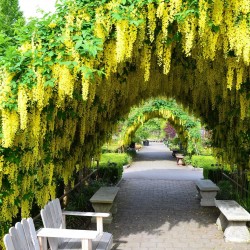
Golden Chain Tree Seeds...
السعر
1.95 €
(SKU: T 21)
Seeds Gallery EU,
5/
5
<h2><strong>Golden Chain Tree Seeds (Laburnum anagyroides)</strong></h2>
<h2><span style="color: #ff0000;"><strong>Price for Package of 5 seeds.</strong></span></h2>
<div>
<div>Hardy, Easy to Grow, Showy Flowering Tree or Shrub, Bonsai, Hedge, Arbor, Pergola, Allee or Espalier. Golden Chain Tree is a small, low-branched, deciduous tree or large shrub that is native to the mountains of central and southern Europe. It typically grows to 15 to 25 feet tall. It is most noted for its profuse and showy late spring bloom of gorgeous yellow flowers in 12 inch dense, pendulous, wisteria-like racemes. Flowers are beautifully displayed against deep green leaves; few trees are more lovely in flower. Trifoliate leaves with elliptic-lanceolate to obovate leaflets each to 3 inches long are a dull green to gray-green with pubescence underneath. Pea-like fruits in seed pods to 2 inches long ripen in fall. All parts of this plant, particularly the seeds, are poisonous.</div>
<div>Other Names: Golden Chain Tree, Laburnum Vulgare, Cytisus Laburnum, Common Laburnum</div>
<div>Zone: 5 to 7</div>
<div>Growth Rate: Slow to moderate</div>
<div>Plant Type: Deciduous Flowering Tree or Shrub</div>
<div>Family: Fabaceae (Pea family)</div>
<div>Native Range: Central and southern Europe</div>
<div>Height: 15 to 30 feet</div>
<div>Spread: 10 to 15 feet</div>
<div>Bloom Time: May - June </div>
<div>Bloom Color: Bright Yellow</div>
<div>Flower/Fruit: 6 to 12 inch yellow, pendulous flower racemes.</div>
<div>Sun: Full Sun to PartSshade</div>
<div>Fall Color: Insignificant fall color</div>
<div>Water: Medium</div>
<div>Maintenance: Medium</div>
<div>Site Requirements /Soil Tolerances: Best grown in organically rich, medium moisture, well-drained soils in full sun to part shade. Soil drainage is particularly important. Best in full sun in the northern part of its growing range, but appreciates part afternoon shade in hot summer climates. Performs poorly in the heat and humidity of the deep South. Best performance generally occurs in climates such as the Pacific Northwest where both summer and winter temperature are moderate. It is best planted in protected locations to minimize risk of damage from sub-zero winter temperatures.</div>
<div>Culture: If trained as a small tree, root suckers must be removed as they appear. Also consider removing the seedpods as they appear because they are not particularly ornamental, they consume plant energies.</div>
<div>Uses: Small specimen tree, shrub border or hedge. Also may be grown as a large shrub. Train for arbors, pergolas, allees or espaliers. Good background plant.</div>
<div><span style="color: #0000ff;"><strong><a href="http://www.youtube.com/watch?v=eDMapxyCTJ4&feature=youtu.be" target="_blank" rel="noreferrer noopener"><span style="color: #0000ff;">http://www.youtube.com/watch?v=eDMapxyCTJ4&feature=youtu.be</span></a></strong></span></div>
</div>
<table cellspacing="0" cellpadding="0" border="1">
<tbody>
<tr>
<td colspan="2" width="100%" valign="top">
<p><span style="color: #008000;"><strong>Sowing Instructions</strong></span></p>
</td>
</tr>
<tr>
<td valign="top" nowrap="nowrap">
<p><span style="color: #008000;"><strong>Propagation:</strong></span></p>
</td>
<td valign="top">
<p><span style="color: #008000;">Seeds</span></p>
</td>
</tr>
<tr>
<td valign="top" nowrap="nowrap">
<p><span style="color: #008000;"><strong>Pretreat:</strong></span></p>
</td>
<td valign="top">
<p><span style="color: #008000;">Pour boiling water over seed, let stand in water for 24 hours. Seeds that swell after soaking in water are ready to germinate. Repeat process on seeds that did not imbibe. Seed coat may require filing or sanding to allow water infiltration.</span></p>
</td>
</tr>
<tr>
<td valign="top" nowrap="nowrap">
<p><span style="color: #008000;"><strong>Stratification:</strong></span></p>
</td>
<td valign="top">
<p><span style="color: #008000;">0</span></p>
</td>
</tr>
<tr>
<td valign="top" nowrap="nowrap">
<p><span style="color: #008000;"><strong>Sowing Time:</strong></span></p>
</td>
<td valign="top">
<p><span style="color: #008000;">all year round</span></p>
</td>
</tr>
<tr>
<td valign="top" nowrap="nowrap">
<p><span style="color: #008000;"><strong>Sowing Depth:</strong></span></p>
</td>
<td valign="top">
<p><span style="color: #008000;">6,3 mm - 1/4"</span></p>
</td>
</tr>
<tr>
<td valign="top" nowrap="nowrap">
<p><span style="color: #008000;"><strong>Sowing Mix:</strong></span></p>
</td>
<td valign="top">
<p><span style="color: #008000;">Coir or sowing mix + sand or perlite</span></p>
</td>
</tr>
<tr>
<td valign="top" nowrap="nowrap">
<p><span style="color: #008000;"><strong>Germination temperature:</strong></span></p>
</td>
<td valign="top">
<p><span style="color: #008000;">22-25 ° C.</span></p>
</td>
</tr>
<tr>
<td valign="top" nowrap="nowrap">
<p><span style="color: #008000;"><strong>Location:</strong></span></p>
</td>
<td valign="top">
<p><span style="color: #008000;">bright + keep constantly moist not wet</span></p>
</td>
</tr>
<tr>
<td valign="top" nowrap="nowrap">
<p><span style="color: #008000;"><strong>Germination Time:</strong></span></p>
</td>
<td valign="top">
<p><span style="color: #008000;">2-9 weeks</span></p>
</td>
</tr>
<tr>
<td valign="top" nowrap="nowrap">
<p><span style="color: #008000;"><strong>Watering:</strong></span></p>
</td>
<td valign="top">
<p><span style="color: #008000;">Water regularly during the growing season</span></p>
</td>
</tr>
<tr>
<td valign="top" nowrap="nowrap">
<p><span style="color: #008000;"><strong> </strong></span></p>
</td>
<td valign="top">
<p><br /><span style="color: #008000;"><em>Copyright © 2012 Seeds Gallery - Saatgut Galerie - Galerija semena. </em><em>All Rights Reserved.</em></span></p>
</td>
</tr>
</tbody>
</table>
T 21 (5 S)

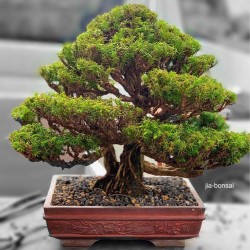
Japanese Cedar Seeds
السعر
1.50 €
(SKU: T 15)
Seeds Gallery EU,
5/
5
<h2><span style="font-size:14pt;"><strong>Sacred Japanese Cedar Seeds Bonsai (Cryptomeria japonica)</strong></span></h2>
<h2><span style="color:#ff0000;"><strong><span style="font-size:14pt;">Price for Package of 2 seeds.</span></strong></span></h2>
<div><span style="font-size:10pt;">A popular plant for Bonsai, evergreen with needle leaves and slightly pendulous branches. It is fast growing and fairly easy to train. <span style="line-height:1.5em;">Cryptomeria is a monotypic genus of conifer in the cypress family Cupressaceae, formerly belonging to the family Taxodiaceae. It includes only one species, Cryptomeria japonica (syn. Cupressus japonica L.f.). It is endemic to Japan, where it is known as Sugi (Japanese: 杉). The tree is often called Japanese cedar in English, though the tree is not related to the true cedars (Cedrus).</span></span></div>
<div>It is a very large evergreen tree, reaching up to 70 m (230 ft) tall and 4 m (13 ft) trunk diameter, with red-brown bark which peels in vertical strips. The leaves are arranged spirally, needle-like, 0.5–1 cm (0.20–0.39 in) long; and the seed cones globular, 1–2 cm (0.39–0.79 in) diameter with about 20–40 scales. It is superficially similar to the related Giant Sequoia (Sequoiadendron giganteum), from which it can be differentiated by the longer leaves (under 0.5 cm in the Giant Sequoia) and smaller cones (4–6 cm in the Giant Sequoia), and the harder bark on the trunk (thick, soft and spongy in Giant Sequoia).</div>
<div>Sugi has been so long-cultivated in China that it is thought by some to be native there. Forms selected for ornament and timber production long ago in China have been described as a distinct varietyCryptomeria japonica var. sinensis (or even a distinct species, Cryptomeria fortunei), but they do not differ from the full range of variation found in the wild in Japan, and there is no definite evidence the species ever occurred wild in China. Genetic analysis of the most famous Chinese population ofCryptomeria japonica var. sinensis in Tianmu Mountain, containing trees estimated to be nearly 1000 years old, supports the hypothesis that the population originates from an introduction.</div>
<div>Cryptomeria grow in forests on deep, well-drained soils subject to warm, moist conditions, and it is fast-growing under these conditions. It is intolerant of poor soils and cold, drier climates.[4]</div>
<div>Cryptomeria is used as a food plant by the larvae of some moths of the genus Endoclita including E. auratus, E. punctimargo and E. undulifer.</div>
<div>Sugi (and Hinoki) pollen is a major cause of hay fever in Japan.</div>
<div>Sugi is the national tree of Japan, commonly planted around temples and shrines, with many hugely impressive trees planted centuries ago. Sargent (1894; The Forest Flora of Japan) recorded the instance of a daimyō (feudal lord) who was too poor to donate a stone lantern at the funeral of the Shogun Tokugawa Ieyasu (1543–1616) at Nikkō Tōshō-gū, but requested instead to be allowed to plant an avenue of Sugi, "that future visitors might be protected from the heat of the sun". The offer was accepted; the avenue, which still exists, is over 65 km (40 mi) long, and "has not its equal in stately grandeur".[6]</div>
<div>It is also extensively used in forestry plantations in Japan, China and the Azores islands, and is widely cultivated as an ornamental tree in other temperate areas, including Britain, Europe, North America and eastern Himalaya regions of Nepal and India. In the hills of Darjeeling and Sikkim, it is called dhuppi and the tall trees yield a light, soft wood that is extensively used for making planking for houses.</div>
<div>One very popular ornamental form is the cultivar "Elegans", which is notable for retaining juvenile foliage throughout its life, instead of developing normal adult foliage when one year old (see the picture with different shoots). It makes a small, shrubby tree 5–10m tall. There are numerous dwarf cultivars that are widely used in rock gardens and for bonsai, including 'tansu', 'koshyi', 'little diamond', 'yokohama' and 'kilmacurragh.'</div>
<div>The following cultivars have gained the Royal Horticultural Society's Award of Garden Merit:-</div>
<div>The wood is scented, reddish-pink in colour, lightweight but strong, waterproof and resistant to decay. It is favoured in Japan for all types of construction work as well as interior panelling, etc. In Darjeeling district and Sikkim in India, where it is one of the most widely growing trees, Cryptomeria japonica is called Dhuppi and is favoured for its light wood, extensively used in house building.</div>
<div>Its introduction in the Azores islands to be used commercially, resulted in the destruction of much of the original, now threatened, native laurel forest which affected an entire complex environment threatening many other species such as the priolo.</div>
<table cellspacing="0" cellpadding="0" border="1"><tbody><tr><td colspan="2" width="100%" valign="top">
<p><span style="color:#008000;"><strong>Sowing Instructions</strong></span></p>
</td>
</tr><tr><td valign="top" nowrap="nowrap">
<p><span style="color:#008000;"><strong>Propagation:</strong></span></p>
</td>
<td valign="top">
<p><span style="color:#008000;">Seeds</span></p>
</td>
</tr><tr><td valign="top" nowrap="nowrap">
<p><span style="color:#008000;"><strong>Pretreat:</strong></span></p>
</td>
<td valign="top">
<p><span style="color:#008000;">soak in water for 12-24 hours</span></p>
</td>
</tr><tr><td valign="top" nowrap="nowrap">
<p><span style="color:#008000;"><strong>Stratification:</strong></span></p>
</td>
<td valign="top">
<p><span style="color:#008000;">10 days to two weeks in the moist substrate in refrigerator at 2-5 ° C.</span></p>
</td>
</tr><tr><td valign="top" nowrap="nowrap">
<p><span style="color:#008000;"><strong>Sowing Time:</strong></span></p>
</td>
<td valign="top">
<p><span style="color:#008000;">all year round</span></p>
</td>
</tr><tr><td valign="top" nowrap="nowrap">
<p><span style="color:#008000;"><strong>Sowing Depth:</strong></span></p>
</td>
<td valign="top">
<p><span style="color:#008000;">Cover the seeds lightly with substrate</span></p>
</td>
</tr><tr><td valign="top" nowrap="nowrap">
<p><span style="color:#008000;"><strong>Sowing Mix:</strong></span></p>
</td>
<td valign="top">
<p><span style="color:#008000;">Coir or sowing mix + sand or perlite</span></p>
</td>
</tr><tr><td valign="top" nowrap="nowrap">
<p><span style="color:#008000;"><strong>Germination temperature:</strong></span></p>
</td>
<td valign="top">
<p><span style="color:#008000;">min. 20 ° C</span></p>
</td>
</tr><tr><td valign="top" nowrap="nowrap">
<p><span style="color:#008000;"><strong>Location:</strong></span></p>
</td>
<td valign="top">
<p><span style="color:#008000;">bright + keep constantly moist not wet</span></p>
</td>
</tr><tr><td valign="top" nowrap="nowrap">
<p><span style="color:#008000;"><strong>Germination Time:</strong></span></p>
</td>
<td valign="top">
<p><span style="color:#008000;">2-4 weeks</span></p>
</td>
</tr><tr><td valign="top" nowrap="nowrap">
<p><span style="color:#008000;"><strong>Watering:</strong></span></p>
</td>
<td valign="top">
<p><span style="color:#008000;">Water regularly during the growing season</span></p>
</td>
</tr><tr><td valign="top" nowrap="nowrap">
<p><span style="color:#008000;"><strong> </strong></span></p>
</td>
<td valign="top">
<p><br /><span style="color:#008000;"><em>Copyright © 2012 Seeds Gallery - Saatgut Galerie - Galerija semena. </em><em>All Rights Reserved.</em></span></p>
</td>
</tr></tbody></table>
T 15 (2 S)

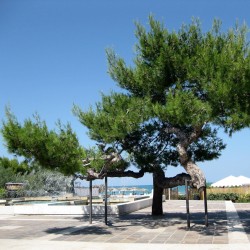
Jerusalem Pine Seeds
السعر
1.75 €
(SKU: T 28)
Seeds Gallery EU,
5/
5
<div id="idTab1" class="rte">
<h2><span style="font-size:14pt;"><strong>Jerusalem Pine Seeds (Pinus Halepensis)</strong></span></h2>
<h2><span style="color:#ff0000;font-size:14pt;"><strong>Price for Package of 5 seeds.</strong></span></h2>
<p>The Aleppo Pine tree is a Maltese indigenous tree and grows in most Mediterranean countries. It is a coniferous, evergreen tree. It is a small to medium-sized tree, reaching 15-25m of length and with a trunk diameter of up to 60cm. The leaves are very slender like ‘needles’ and are 6-12cm long, light green in colour and produced in pairs. The cones are 5-8cm long and 2-3cm broad at the base when closed, green at first, ripening to brown when 24 months old. They open slowly over the next few years, a process quickened if they are exposed to heat such as in forest fires. The cones open wide to allow the seeds to disperse. The seeds are 5-6mm long, with a 20mm wing, and are wind-dispersed. Aleppo pine reproduces by seed only. Seeds are mostly shed during summer. Up to 90% of seeds can germinate. The tree starts producing after its fourth year.</p>
<p>There are no male or female Aleppo Pine trees, but the tree produces male and female cones which start growing in autumn. Female cones are usually closer to the top and grow as individuals. Male cones grow in clusters. The one that we normally think of as a ‘cone’ is the female cone that produces the seeds. Since the male cones are full of pollen which is dispersed by the slightest movement, female cones are wind pollinated.</p>
<p>When one of the branches of the Aleppo Pine tree is cut off, the tree will never again grow another branch from the same place but will remain without that branch for the rest of its life. When a branch is cut off, a sticky substance called „resin‟ comes out from the tree trunk. This is a natural disinfectant which the tree produces to disinfect its wound. In colder countries, where a similar species of pine is cut down to produce timber and paper, this resin is collected and used in pine disinfectant.</p>
</div>
T 28


نبات مقاوم للبرد والصقيع
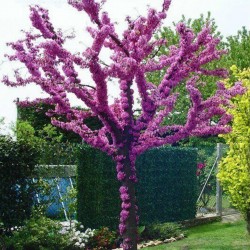
زمزريق أثيبي بذور
السعر
1.95 €
(SKU: T 9)
Seeds Gallery EU,
5/
5
<meta http-equiv="Content-Type" content="text/html; charset=UTF-8" />
<h2 id="short_description_content" class="rte align_justify"><strong>زمزريق أثيبي بذور</strong></h2>
<h2 class="rte align_justify"><span style="color: #ff0000;"><strong>ثمن العبوة المكونة من 10 ، 20 ، 50 بذرة.</strong></span></h2>
<p>الزمزريق الأثيبي (باللاتينية: Cercis siliquastrum) نوع نباتي شجري من جنس الزمزريق من الفصيلة البقولية.</p>
<p>The deep pink flowers are produced on year-old or older growth, including the trunk in late spring (cauliflory). The leaves appear shortly after the first flowers emerge. These are heart-shaped with a blunt apex, which occasionally has a shallow notch at the tip. The tree produces long flat pods that hang vertically. The flowers are edible and purportedly have a sweet-acid taste.</p>
<p>The species was first described by Linnaeus in 1753 and he gave it the specific epithet of siliquastrum which is derived from the Latin word siliqua, meaning "pod".[2] The generic name comes from the<span> </span>Greek<span> </span>kerkis, a "shuttle", which refers to the resemblance shown to this weaver's tool by the flat, woody seedpods.</p>
<p>There is a long-standing myth that Judas Iscariot hanged himself from a tree of this species. This belief is related to the common name "Judas Tree" which is possibly a corrupted derivation from the French common name, Arbre de Judée meaning tree of Judea, referring to the hilly regions of that country where the tree used to be common. Another possible source for the vernacular name is the fact that the flowers and seedpods can dangle direct from the trunk in a way reminiscent of Judas' suicide.</p>
<p>The flowers are pollinated by bees, attracted by nectar. Pollen from the protuding stamens is deposited on the bee's body and carried to another flower's stigma.</p>
<table cellspacing="5" cellpadding="0" border="0">
<tbody>
<tr>
<td class="biggreencontent" align="left"><span><strong>Cultivation details</strong></span></td>
<td></td>
</tr>
<tr>
<td colspan="2"><span>Succeeds in most soils and pH types, but dislikes growing in wet soils, especially when these are of clay. Prefers a deep sandy loam and a very sunny position. Thrives on chalk and in dry sandy soils. Probably does best on a poorish soil. Succeeds in light shade. Dislikes drought. Dormant plants are hardy to about -15°c. The young growth in spring, even on mature plants, is frost-tender and so it is best to grow the plants in a position sheltered from the early morning sun. Plants do not generally thrive at Kew, they prefer a hotter, continental climate in order to fully ripen their wood. One report says that plants require cool greenhouse treatment in Britain, though several good specimens have been seen outdoors in this country. The tree often does not flower freely in Britain, especially if the previous summer was cool. Plants are susceptible to coral spot fungus, especially when growing in areas with cool summers where the wood is not fully ripened. Plants in this genus are notably resistant to honey fungus. Resents root disturbance, plants should be planted into their permanent positions as soon as possible, preferably in May, and should be kept well watered until established. Any pruning is best carried out in the winter. A very ornamental plant, flowering well in Cornwall. It flowers better when growing in a continental climate. The flowers are produced on the branches of the previous or earlier years, and also on the trunk of the plant. A good bee plant. This species has a symbiotic relationship with certain soil bacteria, these bacteria form nodules on the roots and fix atmospheric nitrogen. Some of this nitrogen is utilized by the growing plant but some can also be used by other plants growing nearby.</span></td>
</tr>
</tbody>
</table>
T 9 (10 S)

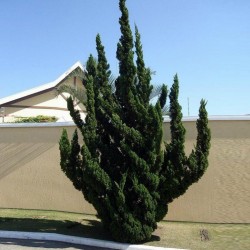
Juniperus chinensis Bonsai...
السعر
1.50 €
(SKU: T 11)
Seeds Gallery EU,
5/
5
<h2><span style="font-size: 14pt;"><strong>Juniperus chinensis Bonsai Seeds (Chinese Juniper)</strong></span></h2>
<h2><span style="color: #ff0000; font-size: 14pt;"><strong>Price for Package of 5 seeds.</strong></span></h2>
<div>Junipers are coniferous plants in the genus Juniperus ( /dʒuːˈnɪpərəs/)[1] of the cypress family Cupressaceae. Depending on taxonomic viewpoint, there are between 50-67 species of juniper, widely distributed throughout the northern hemisphere, from the Arctic, south to tropical Africa in the Old World, and to the mountains of Central America.</div>
<div>Junipers vary in size and shape from tall trees, 20–40 m tall, to columnar or low spreading shrubs with long trailing branches. They are evergreen with needle-like and/or scale-like leaves. They can be either monoecious or dioecious. The female seed cones are very distinctive, with fleshy, fruit-like coalescing scales which fuse together to form a "berry"-like structure, 4–27 mm long, with 1-12 unwinged, hard-shelled seeds. In some species these "berries" are red-brown or orange but in most they are blue; they are often aromatic and can be used as a spice. The seed maturation time varies between species from 6–18 months after pollination. The male cones are similar to those of other Cupressaceae, with 6-20 scales; most shed their pollen in early spring, but some species pollinate in the autumn.</div>
<div>Detail of Juniperus chinensis shoots, with juvenile (needle-like) leaves (left), and adult scale leaves and immature male cones (right)</div>
<div>Many junipers (e.g. J. chinensis, J. virginiana) have two types of leaves: seedlings and some twigs of older trees have needle-like leaves 5–25 mm long; and the leaves on mature plants are (mostly) tiny (2–4 mm long), overlapping and scale-like. When juvenile foliage occurs on mature plants, it is most often found on shaded shoots, with adult foliage in full sunlight. Leaves on fast-growing 'whip' shoots are often intermediate between juvenile and adult.</div>
<div>In some species (e. g. J. communis, J. squamata), all the foliage is of the juvenile needle-like type, with no scale leaves. In some of these (e.g. J. communis), the needles are jointed at the base, in others (e.g. J. squamata), the needles merge smoothly with the stem, not jointed.</div>
<div>The needle-leaves of junipers are hard and sharp, making the juvenile foliage very prickly to handle. This can be a valuable identification feature in seedlings, as the otherwise very similar juvenile foliage of cypresses (Cupressus, Chamaecyparis) and other related genera is soft and not prickly.</div>
<div>Juniper is the exclusive food plant of the larvae of some Lepidoptera species including Bucculatrix inusitata and Juniper Carpet, and is also eaten by the larvae of other Lepidoptera species such as Chionodes electella, Chionodes viduella, Juniper Pug and Pine Beauty; those of the tortrix moth C. duplicana feed on the bark around injuries or canker.</div>
<div>[edit]Classification</div>
<div>Ashe Juniper (popularly called Cedar) in 'Mist lifting off cedars' by DJ Schulte</div>
<div>The number of juniper species is in dispute, with two recent studies giving very different totals, Farjon (2001) accepting 52 species, and Adams (2004) accepting 67 species. The junipers are divided into several sections, though (particularly among the scale-leaved species) which species belong to which sections is still far from clear, with research still on-going. The section Juniperus is an obvious monophyletic group though.</div>
<table cellspacing="0" cellpadding="0" border="1">
<tbody>
<tr>
<td colspan="2" width="100%" valign="top">
<p><span style="color: #008000;"><strong>Sowing Instructions</strong></span></p>
</td>
</tr>
<tr>
<td valign="top" nowrap="nowrap">
<p><span style="color: #008000;"><strong>Propagation:</strong></span></p>
</td>
<td valign="top">
<p><span style="color: #008000;">Seeds</span></p>
</td>
</tr>
<tr>
<td valign="top" nowrap="nowrap">
<p><span style="color: #008000;"><strong>Pretreat:</strong></span></p>
</td>
<td valign="top">
<p><span style="color: #008000;">0</span></p>
</td>
</tr>
<tr>
<td valign="top" nowrap="nowrap">
<p><span style="color: #008000;"><strong>Stratification:</strong></span></p>
</td>
<td valign="top">
<p><span style="color: #008000;">Place the planting tray in a refrigerator for two to three months during the winter. Remove the tray from the refrigerator and keep them in a warm place for two to three months. Put the planting tray back into the refrigerator for two to three more months.</span></p>
</td>
</tr>
<tr>
<td valign="top" nowrap="nowrap">
<p><span style="color: #008000;"><strong>Sowing Time:</strong></span></p>
</td>
<td valign="top">
<p><span style="color: #008000;">all year round</span></p>
</td>
</tr>
<tr>
<td valign="top" nowrap="nowrap">
<p><span style="color: #008000;"><strong>Sowing Depth:</strong></span></p>
</td>
<td valign="top">
<p><span style="color: #008000;">Cover the seeds with a thin layer of garden soil.</span></p>
</td>
</tr>
<tr>
<td valign="top" nowrap="nowrap">
<p><span style="color: #008000;"><strong>Sowing Mix:</strong></span></p>
</td>
<td valign="top">
<p><span style="color: #008000;">Coir or sowing mix + sand or perlite</span></p>
</td>
</tr>
<tr>
<td valign="top" nowrap="nowrap">
<p><span style="color: #008000;"><strong>Germination temperature:</strong></span></p>
</td>
<td valign="top">
<p><span style="color: #008000;">min. 20 ° C</span></p>
</td>
</tr>
<tr>
<td valign="top" nowrap="nowrap">
<p><span style="color: #008000;"><strong>Location:</strong></span></p>
</td>
<td valign="top">
<p><span style="color: #008000;">bright + keep constantly moist not wet</span></p>
</td>
</tr>
<tr>
<td valign="top" nowrap="nowrap">
<p><span style="color: #008000;"><strong>Germination Time:</strong></span></p>
</td>
<td valign="top">
<p><span style="color: #008000;">3-6 weeks</span></p>
</td>
</tr>
<tr>
<td valign="top" nowrap="nowrap">
<p><span style="color: #008000;"><strong>Watering:</strong></span></p>
</td>
<td valign="top">
<p><span style="color: #008000;">Water regularly during the growing season</span></p>
</td>
</tr>
<tr>
<td valign="top" nowrap="nowrap">
<p><span style="color: #008000;"><strong> </strong></span></p>
</td>
<td valign="top">
<p><br /><span style="color: #008000;"><em>Copyright © 2012 Seeds Gallery - Saatgut Galerie - Galerija semena. </em><em>All Rights Reserved.</em></span></p>
</td>
</tr>
</tbody>
</table>
T 11


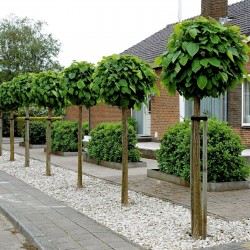
كتلبة بنيونية بذور (Catalpa...
السعر
1.75 €
(SKU: T 17)
Seeds Gallery EU,
5/
5
<!DOCTYPE html>
<html>
<head>
<meta http-equiv="Content-Type" content="text/html; charset=UTF-8" />
</head>
<body>
<h2>كتلبة بنيونية بذور (Catalpa bignonioides)</h2>
<h2><span style="color: #ff0000;"><strong>ثمن عبوة 20 بذرة.</strong></span></h2>
<p><b>كتلبة بنيونية</b><span> </span>(الاسم العلمي:Catalpa bignonioides) هي<span> </span>نوع<span> </span>من<span> </span>النباتات<span> </span>تتبع<span> </span>جنس<span> </span>الكتلبة<span> </span>من<span> </span>الفصيلة<span> </span>البنيونية.<sup id="cite_ref-3" class="reference">[3]</sup></p>
<p>Catalpa, commonly called catalpa or catawba, is a genus of flowering plants in the family Bignoniaceae, native to warm temperate regions of North America, the Caribbean, and East Asia. Mostly deciduous trees, they typically grow to 12–18 metres (39–59 ft) tall and 6–12 metres (20–39 ft) wide. A 10-year-old sapling will stand about 6 metres (20 ft) tall. They can be recognized by their large, heart-shaped to three-lobed leaves, showy white or yellow flowers in broad panicles, and in the autumn by their 20–50 centimetres (7.9–20 in) long fruits, which resemble a slender bean pod, containing numerous small flat seeds, each seed having two thin wings to aid in wind dispersal. Because of the leaves, they are sometimes confused with the tung tree (Vernicia fordii) in the southern U.S., or the invasive Paulownia tomentosa imported from China. Due to their large leaf size, catalpas provide very dark shade and are a popular habitat for many birds, providing them good shelter from rain and wind. These trees have very little limb droppage, but drop large, dark brown bean pods during late summer. The wood of catalpas is quite soft. Species The two North American species, Catalpa bignonioides and Catalpa speciosa, have been widely planted outside their natural ranges as ornamental trees for their showy flowers and attractive shape, or growing habit. Northern and southern catalpas are very similar in appearance, but the northern species has slightly larger leaves, flowers, and bean pods. Flowering starts after 275 growing degree days. Catalpa ovata from China, with pale yellow flowers, is also planted outside its natural range for ornamental purposes. Etymology The name derives from the Catawba Native American name catawba for these trees (the tribal totem), with the spelling catalpa being due to a transcription error on the part of the describing botanist (Scopoli) making the first formal scientific description of the genus. The rules of botanical naming state that the spelling used in the formal scientific description has to be retained for the scientific name. The name in vernacular use has very largely (though not completely) followed Scopoli's erroneous transcription, with catawba still in use in some areas of the United States, most particularly within the trees' native range.<br />The bean-like seed pod is the origin of the alternative vernacular names Indian bean tree and cigar tree for Catalpa bignonioides and Catalpa speciosa, respectively.<br />Food source The tree is the sole source of food for the catalpa sphinx moth (Ceratomia catalpae), the leaves being eaten by the caterpillars. When caterpillars are numerous, infested trees may be completely defoliated. Defoliated catalpas produce new leaves readily, but with multiple generations occurring, new foliage may be consumed by subsequent broods. Severe defoliation over several consecutive years can cause death of trees. Because the caterpillars are an excellent live bait for fishing, some dedicated anglers plant catalpa mini-orchards for their own private source of "catawba-worms", particularly in the southern states.<br />Sowing Instructions</p>
<div></div>
<div>
<div>
<table cellspacing="0" cellpadding="0" border="1">
<tbody>
<tr>
<td colspan="2" width="100%" valign="top"><span style="color: #008000;"><strong>Sowing Instructions</strong></span></td>
</tr>
<tr>
<td valign="top" nowrap="nowrap"><span style="color: #008000;"><strong>Propagation:</strong></span></td>
<td valign="top"><span style="color: #008000;">Seeds</span></td>
</tr>
<tr>
<td valign="top" nowrap="nowrap"><span style="color: #008000;"><strong>Pretreat:</strong></span></td>
<td valign="top"><span style="color: #008000;">soak in water for 24 hours</span></td>
</tr>
<tr>
<td valign="top" nowrap="nowrap"><span style="color: #008000;"><strong>Stratification:</strong></span></td>
<td valign="top"><span style="color: #008000;">3-6 weeks in moist sowing mix at 2-5 ° C refrigerator</span></td>
</tr>
<tr>
<td valign="top" nowrap="nowrap"><span style="color: #008000;"><strong>Sowing Time:</strong></span></td>
<td valign="top"><span style="color: #008000;">all year round > spring preferred</span></td>
</tr>
<tr>
<td valign="top" nowrap="nowrap"><span style="color: #008000;"><strong>Sowing Depth:</strong></span></td>
<td valign="top"><span style="color: #008000;">Cover lightly with substrate</span></td>
</tr>
<tr>
<td valign="top" nowrap="nowrap"><span style="color: #008000;"><strong>Sowing Mix:</strong></span></td>
<td valign="top"><span style="color: #008000;">Coir or sowing mix + sand or perlite</span></td>
</tr>
<tr>
<td valign="top" nowrap="nowrap"><span style="color: #008000;"><strong>Germination temperature:</strong></span></td>
<td valign="top"><span style="color: #008000;">20-23°C</span></td>
</tr>
<tr>
<td valign="top" nowrap="nowrap"><span style="color: #008000;"><strong>Location:</strong></span></td>
<td valign="top"><span style="color: #008000;">bright + keep constantly moist not wet</span></td>
</tr>
<tr>
<td valign="top" nowrap="nowrap"><span style="color: #008000;"><strong>Germination Time:</strong></span></td>
<td valign="top"><span style="color: #008000;">until it germinates </span></td>
</tr>
<tr>
<td valign="top" nowrap="nowrap"><span style="color: #008000;"><strong>Watering:</strong></span></td>
<td valign="top"><span style="color: #008000;">Water regularly during the growing season</span></td>
</tr>
<tr>
<td valign="top" nowrap="nowrap"><span style="color: #008000;"><strong> </strong></span></td>
<td valign="top"><br /><span style="color: #008000;"><em>Copyright © 2012 Seeds Gallery - Saatgut Galerie - Galerija semena. </em><em>All Rights Reserved.</em><em></em></span></td>
</tr>
</tbody>
</table>
</div>
</div>
</body>
</html>
T 17





